Testosterone Replacement Therapy for Men — Everything You’ve Ever Wanted to Know About TRT
This guide covers everything you’ve ever wanted to know about Testosterone Replacement Therapy for men and has been divided into simple sections for easy reading. Use this table of contents to find the answers you’re looking for.
- What Is Testosterone Replacement Therapy? Answering The Most Important Questions
- Questions to Ask Your Testosterone Replacement Therapy Provider
- What Sets This Clinic Apart?
- Does This Clinic Follow Specific Ethical Standards?
- What Are the Goals of Treatment?
- Who Can Receive Treatment and How Is Progress Monitored?
- What Methods Do You Use to Administer Supplemental Testosterone?
- What Improvement Can I Expect?
- What Are the Possible Side Effects of Treatment and How Will You Mitigate Them?
- The First Visit To a Testosterone Replacement Therapy Clinic
- Ongoing Management At a TRT Clinic
- Making Your Decision
- Testosterone Replacement Therapy (TRT) — How We Know It’s Right for You
- The TRT Treatment Process — A Timeline
- Managing Your TRT Long Term
- Testosterone Replacement Therapy (TRT) — Available Treatment Methods
- Benefits of Treatment — Goals of Treatment
- Is Testosterone Replacement Therapy Safe?
- Side Effects of TRT
- Why Side Effects Occur With Testosterone Replacement Therapy (TRT)
- DHT and Estradiol
- Testosterone, Hematocrit Levels, Erythrocytosis, and High Blood Pressure
- Testosterone Injections and Water Retention
- TRT and Sleep Apnea
- TRT and Balding
- TRT and Prostate Cancer
- Early Cancer Detection
- Testosterone Can Cause Prostate Change
- TRT and PSA in Detail — Will TRT Increase Your PSA Numbers?
- PSA Above 4.0 ng/mL Doesn’t Automatically Mean Prostate Cancer
- The Truth: We Don’t Really Understand the Cause of Prostate Cancer
- TRT And BPH — Effects on Urinary Health
- TRT and Cancer — The Summary
- Testosterone, Cholesterol, and Effects on the Heart
- Increased Pain Tolerance
- Testosterone Replacement Therapy and Fertility
- TRT and Gynecomastia
- Side Effects of Testosterone Replacement Therapy (TRT) — Conclusions
- Testosterone Replacement Therapy and Erectile Dysfunction
- Testosterone Replacement Therapy: Before and After (A Patient’s Perspective)
- Testosterone Replacement Therapy — How to Get Started
- Why Testosterone Replacement Therapy?
What is Testosterone Replacement Therapy (TRT)?
That’s a really good question, especially considering all the press low testosterone and Low T have been getting these days.
If you’re a man in your 30s or over who seems to feel tired more often than in years past without good reason, you could be suffering from the symptoms of hypogonadism (the medical term for low testosterone).
Low testosterone is a fairly common problem, especially in men over 30. In fact, the number of men who meet the criteria for chronic low testosterone has increased in recent years, particularly among men in their 50s (12%) and 60s (19%).
1. What Is Testosterone Replacement Therapy? Answering The Most Important Questions
For men in otherwise good health but suffering from low testosterone, the answer is easy: Testosterone Replacement Therapy is a way for men suffering from the symptoms of low testosterone to feel better.
The goal of Testosterone Replacement Therapy (TRT) is to compensate for the failure of your body to produce enough testosterone to function properly, and at a high level.
TRT uses the lowest effective dose to alleviate symptoms, which generally puts you consistently in the “mid-normal” range.
TRT seeks to not simply increase your testosterone levels, but to restore balance to your hormones generally. Simply put, when you have low testosterone (hypogonadism), your ratios of testosterone to estradiol are no longer what they should be.
This style of treatment allows patients to stay above borderline low levels, which often are still associated with unwanted symptoms, while keeping you out of the borderline high range that increases your risk of side effects.
TRT isn’t going to make you feel like you’re 20 again, and it’s not going to cure everything that ails you, but with a combination of medically managed Testosterone Replacement Therapy (TRT), exercise, and dietary changes, you can start feeling like yourself again, sometimes in just a few weeks.
Talk to a TRT expert and get back to feeling the way you're supposed to.
Now serving patients in all Texas cities.
2. Questions to Ask Your Testosterone Replacement Therapy Provider
Choosing the right provider of Testosterone Replacement Therapy can be difficult, so here’s what you should expect when you start looking at different providers, and here are some questions you should ask.
You should be able to have a free, but probably brief, consultation with a treatment provider. This might be in something called a “men’s clinic,” or it might simply be in a clinic that specifically provides Testosterone Replacement Therapy.
To make the most of this opportunity, it’s best to have some questions prepared, such as the following:
- What sets this clinic apart?
- Does this clinic follow specific ethical standards or principles?
- What are the treatment goals?
- How is treatment suitability determined and progress monitored?
- What methods do you use to administer supplemental testosterone?
- What improvement should I expect?
- What are the possible side effects of treatment and how will you mitigate them?
The basic idea is to make sure you understand exactly what you’re getting (while at the same time vetting your provider).
Any quality provider is going to be ready, willing, and able to discuss the details of your therapy in depth, and as a patient, you have a right to get all the information you want before you begin your treatment.
You also have a right to walk away. If you don’t feel comfortable for any reason, choose a different provider.
Talk to a TRT expert and get back to feeling the way you're supposed to.
Now serving patients in all Texas cities.
2.a. What Sets This Clinic Apart?
The answer to that question will vary for each Low T clinic, just like any other business.
As the owners and operators of Testosterone Centers of Texas, we’re local business people whose reputation as medical practitioners is on the line, as well as our livelihood — you will not find us cutting corners.
Your health matters to us, both as medical providers and members of the community, which means we provide the highest quality of care possible, but your time also matters to us, so we pair that high level of quality with stellar customer service.
Unlike many other medical practices, we respect your time and don’t leave you in the waiting room wondering when you’ll be next — all of this sets us apart.
You’ll want to find out the same from any Low T clinic you approach for treatment. What do they do that makes them better than the rest?
2.b. Does This Clinic Follow Specific Ethical Standards?
We believe in our medical ethics and principles — we’re dedicated to the principles of evidence-based medicine.
That means that we study, we are up to date on the latest research in our field, and we continually seek to deepen our expertise in order to provide the highest standard of care.
So ask your providers — what standards and principles do you follow at this Low T clinic? Do you have them codified somewhere?
Talk to a TRT expert and get back to feeling the way you're supposed to.
Now serving patients in all Texas cities.
2.c What Are the Goals of Treatment?
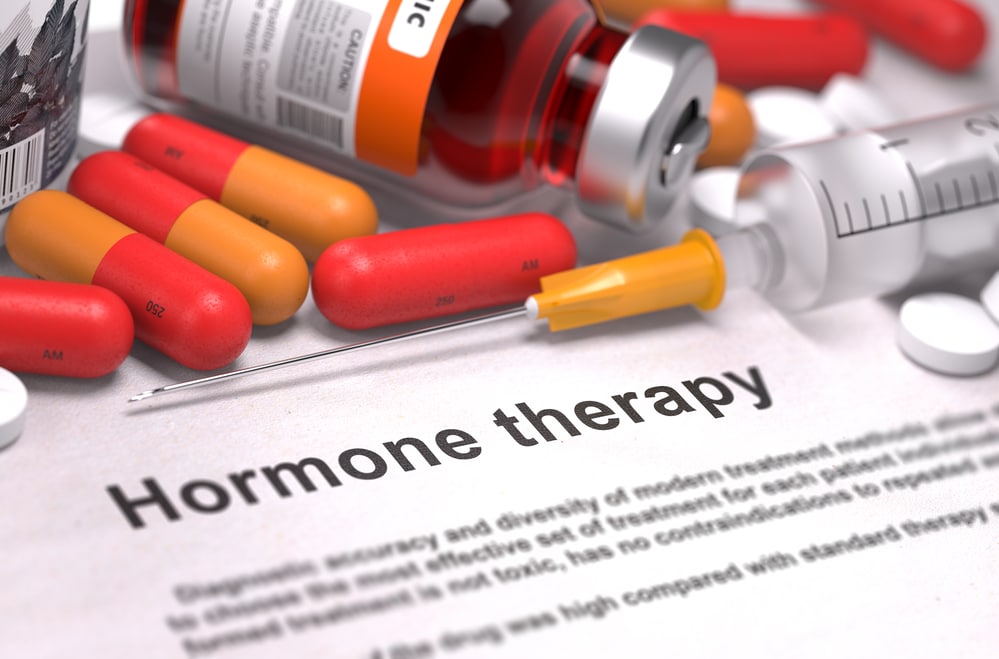
The goals of treatment are determined by the symptoms you’re experiencing. You want to feel better, so relief from your individual symptoms should be one of the primary goals of treatment.
The focus should not be on reaching a predetermined number on a lab test.
The following are some of the more common symptoms Low T clinics treat:
- Fatigue
- Sexual Dysfunction
- Weight Problems
- Trouble Concentrating
- Loss of Endurance
- Depressed Mood
- Muscle Weakness & Loss
So ask your provider — what are the goals of my treatment? How important is it to you that we work to eliminate my symptoms?
2.d. Who Can Receive Treatment and How Is Progress Monitored?
To be considered a candidate for Testosterone Replacement Therapy, a patient must have both verifiable low testosterone levels and measurable negative symptoms (like those mentioned above).
So, your symptoms and our dedication to your health and safety guide our treatment plan, which is based on recommendations from the Endocrine Society.
Your safety is paramount from the initiation of treatment onward. That means consistent monitoring of hormone levels by conducting regularly scheduled lab work.
We take that schedule for blood testing and frequent adjustment of your prescribed doses with the utmost seriousness. Hormone levels fluctuate, so it’s important to administer correct doses to keep your testosterone in the optimum range AND in balance with your other hormones.
So ask you provider: How will you monitor my progress? How will you determine if I’m a good candidate for treatment?
Talk to a TRT expert and get back to feeling the way you're supposed to.
Now serving patients in all Texas cities.
2.e. What Methods Do You Use to Administer Supplemental Testosterone?

We continue to recommend weekly injections because they better ensure dosing accuracy, which is necessary to get you the results you expect. The goal of therapy is to have normal T levels 24 hours a day, 7 days a week. Other available treatment options can make this simple concept very challenging.
While there have been a number of other products and delivery methods released to the market in recent years, other methods have proven far less reliable.
Ask your provider: Do you use injections for Testosterone Replacement Therapy?
If not, why not?
(Frankly, if your provider does not use injections, you may want to reconsider.)
2.f. What Improvement Can I Expect?
Let’s get down to the results. What should you reasonably expect your Low T clinic to deliver?
If you have clinically diagnosed hypogonadism (Low T), you should expect improvements in your symptoms as hormone levels normalize and become more consistent.
Other benefits may include the following:
- Reduced Fat and Increased Muscle
- Improved Concentration
- Better Sleep Patterns
- Healthier Bone Density/Strength
- Increased Strength and Athletic Performance
- Improved Mood
- Better Insulin Sensitivity
- Improved Erectile Function
- Heightened Motivation
- Increased Sense of Well-Being
Ask your provider — how long will it take for symptoms to go away? What other improvements can I expect? Can you give me a timeline?
Talk to a TRT expert and get back to feeling the way you're supposed to.
Now serving patients in all Texas cities.
2.g. What Are the Possible Side Effects of Treatment and How Will You Mitigate Them?
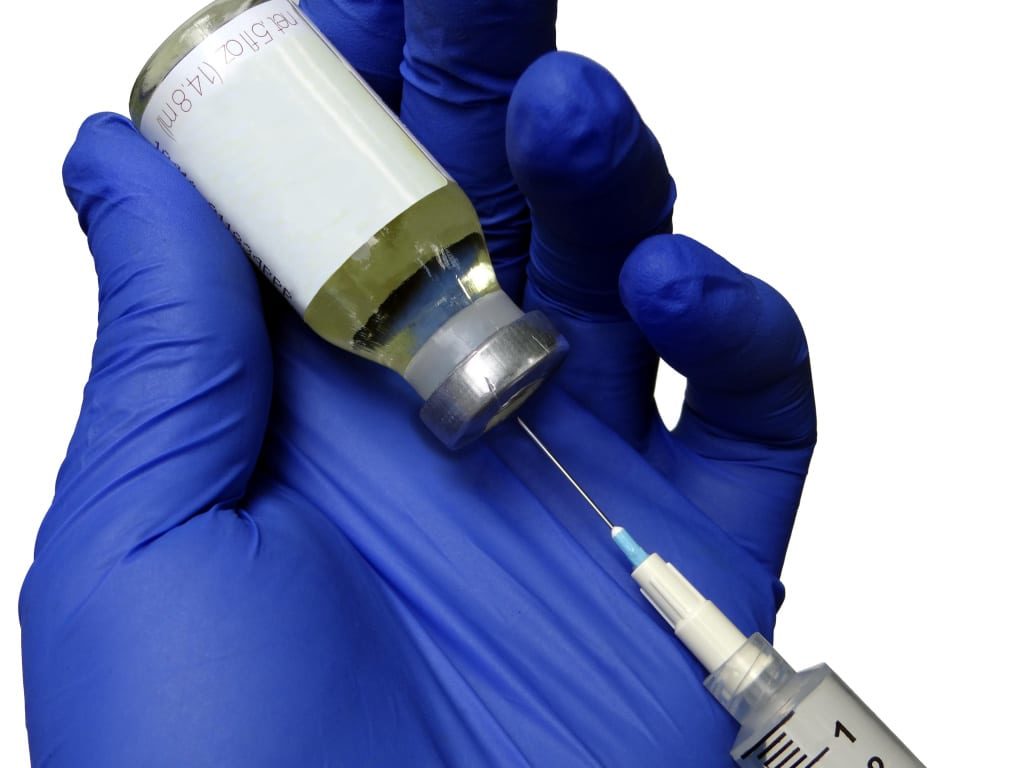
Like any medical treatment, there are possible side effects with Testosterone Replacement Therapy.
We’re entirely up front about any risks, and we are thoroughly prepared to explain exactly how we attempt to reduce the probability of negative side effects — not every Low T clinic is so willing, or so prepared.
Preventing side effects is about finding what dose is right for your body and monitoring your levels consistently to make sure we’re adjusting for any changes — we’re going to help you return to your body’s natural state of balance, not just some predetermined testosterone score.
Ask your provider: What kind of side effects are possible from my treatment? What measures will you take to reduce them, mitigate them, or eliminate them?
Certainly discussing sensitive personal issues like urinary tract problems, erectile dysfunction, or low testosterone can be somewhat intimidating, but remember that by candidly addressing these, you are actually giving your provider the information they need to help you attempt to overcome them.
Insist on understanding. Make sure you fully grasp what you are being told. One good way to be sure that you do is to repeat back what was said in your own words and confirm that your understanding is accurate.
Don’t be afraid to ask hard questions. Make sure to ask why certain treatments and tests are required, and anything else that will help you understand your diagnosis. When you understand the “why” of your treatment, it is much more likely that you will follow the treatment plan.
Finally, remember that your provider is human. Being cordial and friendly will put you both at ease and open the doors for real communication. This will foster a partnership as opposed to a paternalistic relationship.
The bottom line is that the key to effectively treating low testosterone symptoms rests largely on your ability to talk about them.
This is as much an interview (you interviewing the provider and the Testosterone Replacement Therapy clinic) as it is an informational discussion to confirm that the person sitting across you has your best interest in mind.
Talk to a TRT expert and get back to feeling the way you're supposed to.
Now serving patients in all Texas cities.
2.h. The First Visit To a Testosterone Replacement Therapy Clinic
Some clinics may combine your first visit with your consultation and begin treatment immediately. This isn’t optimal.

At Testosterone Centers of Texas, we separate the process out, upholding our own extremely high standards of care. Your experience would look a little something like this:
- Attend your free consultation
- Get blood drawn for your 1st lab test
- Discuss your lab results on your 1st follow-up and set up 2nd lab
- Get blood drawn for your 2nd lab
- Discuss your lab results on your 2nd follow-up and discuss treatment decision.
- After two qualifying lab results have been documented, therapy can then be initiated
When you go to a TRT clinic that separates your consultation from your appointments and takes multiple labs, you’re more likely to get an accurate measurement of your hormone levels. This leads to more accurate dosing down the road and a higher likelihood of positive outcomes.
After your initial consultation, you should know your potential out-of-pocket costs. This visit should focus on your individual needs and history, including a thorough discussion of the benefits AND risks of TRT.
Remember, not all patients can or should be on TRT, and not every form of TRT is ideal.
Based on our years of experience, we believe injections are the best method of treating Low T.
Talk to a TRT expert and get back to feeling the way you're supposed to.
Now serving patients in all Texas cities.
2.i. Ongoing Management At a TRT Clinic
From here, you should expect close follow up and regular blood work. Hormone replacement therapy does have side effects.
Your provider can help to keep them from becoming a problem, but it will be necessary to do repeated blood tests and to regularly evaluate your symptoms and overall response. This means regular visits to the clinic.
Typically, we test one month after therapy is initiated and/or a dosing change is made. Once your optimal dose is determined and safe, effective levels are maintained, then blood work is only performed every 90 days.
Convenience matters. If your treatment requires estrogen blockers or blood donation, which are common side effects of HRT, we handle those at the clinic itself as much as possible. This saves you both time and money.
2.j. Making Your Decision
Ultimately, the decision is up to you. Do your homework. Request a discussion on all available options and whether that particular practice utilizes them or not.
If you are not completely comfortable with the provider’s knowledge on the subject of TRT, you are in the wrong place.
The busiest clinic isn’t necessarily the best. No matter how popular it is during the lunch-hour rush, you wouldn’t go to McDonald’s for a steak.
You also want a provider who understands hormone therapy generally, and not just Testosterone Replacement Therapy.
A provider who is not well-informed on all forms of hormone treatment (including testosterone, estrogen, thyroid, and progesterone treatment) and cannot explain the differences won’t be able to properly assess what is really right for you.
You wouldn’t have the guy who installs windows build your entire house. Choose the provider and clinic most concerned with your overall health.
Talk to a TRT expert and get back to feeling the way you're supposed to.
Now serving patients in all Texas cities.
3. Testosterone Replacement Therapy (TRT) — How We Know It’s Right for You
It stands to reason that you’re interested in TRT because you haven’t been feeling well.
The first indicators that you might be suffering from clinical hypogonadism (the medical term for low testosterone) are the symptoms you’re experiencing.
Here are just a few of those symptoms:
- Chronic fatigue
- Irritability or anxiety
- Difficulty concentrating
- Depressed mood
- Sleep problems
- Reduced endurance
- Erectile dysfunction
- Reduced strength
- Loss of muscle mass
In diagnosing clinical, chronic low testosterone, what really matters is how you’re feeling — your symptoms. If you’re experiencing symptoms, something is wrong, and we need to figure out what that something is.
Because the symptoms of Low T can actually look a lot like the symptoms of other diseases and disorders, we need more information. We need to confirm these suspicions by more concrete means.
There’s only one way to be sure that your testosterone levels are abnormal and that you suffer from Low T:
Blood testing.
Talk to a TRT expert and get back to feeling the way you're supposed to.
Now serving patients in all Texas cities.
3.a. The Low T Blood Test — Normal Testosterone Levels
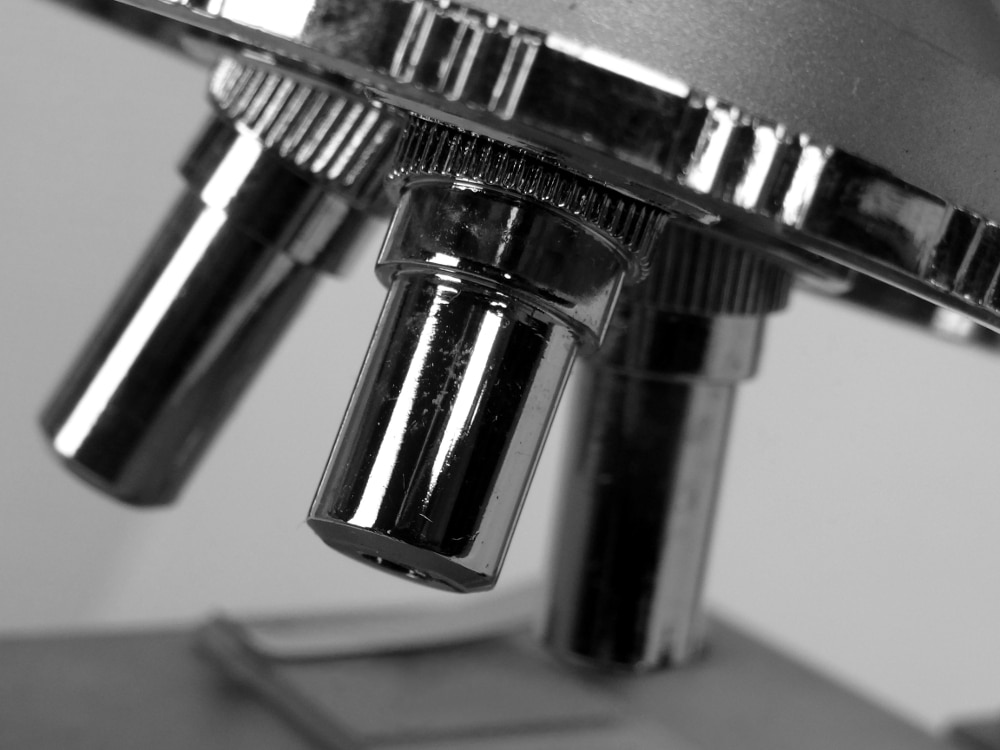
If you think you might be suffering from Low T, a blood test is the only way you can determine, definitively, if low testosterone is the problem or if something else is causing your symptoms.
The ease with which symptoms can be misinterpreted can make arriving at a diagnosis difficult, as providers often suspect many possibilities before nailing down Low T as the cause of symptoms.
We use metrics established by the Endocrine Society to determine if your testosterone levels indicate the presence of hypogonadism (Low T).
- If your total level of testosterone is below 300 ng/dl, you may be suffering from Low T
- If your free testosterone is below 9.0 ng/dl, you may be suffering from Low T
It is vitally important to assess both total and free testosterone.
While there are some differences of opinion, the generally accepted normal range of total testosterone for men should be 300-1000 ng/dl. Even more importantly, free testosterone should read 9-30 ng/dl.
(There is variance from analyzer to analyzer and lab to lab, but this is a generally accepted reference range.)
At the point of diagnosis, it’s advisable to get some additional testing if you only received results for total testosterone. Looking at your calculated free testosterone is critical for diagnosis and determining a treatment protocol.
Direct free testosterone values are not useful clinically and should be ignored.
Once you start to fall outside this range, either on the top or the bottom, you’re entering abnormal territory.
I used that phrase, “abnormal territory,” for a reason — there’s not a clear line dividing what’s abnormal from what’s normal. It’s more like the change between different climates as you drive across a country. You don’t suddenly end up in the desert as you drive out of the mountains — the change is gradual, and there’s a great deal of overlap.
These are average ranges based on the testing of many individuals. It doesn’t mean that you’re abnormal just because your free testosterone is 8.9 or 0.28. You can also exhibit symptoms if you’re technically in the normal range.
Talk to a TRT expert and get back to feeling the way you're supposed to.
Now serving patients in all Texas cities.
3.b. Why “Being Sure” of the Low T Diagnosis Matters
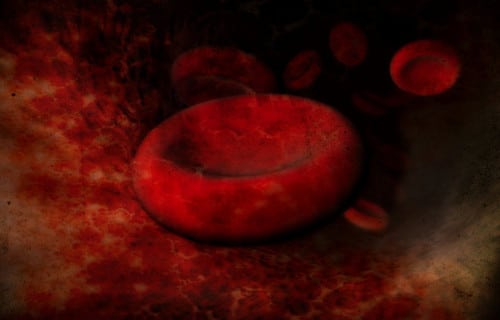
Many of the common symptoms of low testosterone that we listed above, especially chronic fatigue, anxiety, and low mood, can be caused by circumstances that affect your emotions, or by other diseases or disorders.
Relationship issues, work-related stress, a family illness, financial difficulties, the loss of a job, and many other life events can take a toll on your mental and physical health. It’s sometimes easy to misdiagnose yourself under these conditions.
By the same token, there’s a wide variety of other diseases and disorders that can cause these same symptoms.
You’ll need to determine with some level of certainty where to turn for help. Being “sure” about your diagnosis is critical.
Should you seek psychiatric support or counseling? Do you have a serious disease like cancer that requires immediate treatment? Or is it a hormone imbalance that can be addressed with Testosterone Replacement Therapy?
Placing your health at risk with unnecessary medication or the wrong form of treatment can cause even more problems than you began with. Nobody wants those additional concerns.
Regardless of whether you do or do not have clinically low testosterone, a blood test can clear up confusion and set you on the right path toward getting the most suitable treatment, one that addresses the root causes of your symptoms.
To put that another way, a blood test confirming your suspicions about low testosterone levels can free you from the stress of uncertainty. You can now have a clear idea of what the issue is and start seeking treatment with a fair level of assurance.
When treating Low T, blood tests play a number of important roles throughout the entire Testosterone Replacement Therapy (TRT) process.
By and large, Testosterone Replacement Therapy should only be initiated on the right candidates. It’s not enough to just have a couple of mild symptoms. It’s not enough to have a mildly low or “borderline number” and no symptoms. This is a serious decision that warrants thoughtful consideration.
Talk to a TRT expert and get back to feeling the way you're supposed to.
Now serving patients in all Texas cities.
3.c. A Blood Test Also Provides Peace of Mind

When all you are doing is looking for answers, the process can be frustrating.
Not knowing is much worse. Whether negative or positive, results do something very important:
They clear up confusion.
Finally discovering that your testosterone is low (as you’ve probably been suspecting for a while) can be wonderfully freeing — now you know what the problem is.
And even if you find out that your levels are normal, it means you can check a possible culprit off the list.
You can finally move on to another possible cause.
A blood test for Low T can provide much of that information for you and your health provider. And, if the problem isn’t Low T, a blood test may help determine what the problem actually is that’s causing your symptoms.
3.d. Your Test Results Could Be Wrong — Make Sure You Get a Second Opinion
Don’t be afraid to get a second opinion. Don’t rely on a single set of testosterone test results — it’s often the case that medical providers give patients the wrong test, at the wrong time, and with the wrong interpretation (especially those who don’t specialize in or aren’t familiar with Testosterone Replacement Therapy).
If you are experiencing symptoms that indicate Low T, a blood test is the primary tool for reaching a clinical diagnosis.
Talk to a TRT expert and get back to feeling the way you're supposed to.
Now serving patients in all Texas cities.
3.e. Do Testosterone Levels Fluctuate?
The simple answer is yes — even for men who don’t have hormone issues, testosterone (and other hormones) will fluctuate naturally throughout the day.
This is one of the reasons we only measure testosterone levels in the morning. In the afternoon and evening, men’s testosterone levels tend to drop, sometimes severely.
This can present difficulties for men who are considering therapy.
While insurance coverage varies greatly, especially when it comes to deductibles, do not let the possibility of high costs for Low T treatment deter you from getting an accurate diagnosis.
Interestingly, it is also believed that testosterone levels do fluctuate from day to day (that is, throughout the month) in addition to the normal daily fluctuation, though the science behind this is new and not nearly as well established as the research behind women’s monthly and yearly hormone fluctuations.
4. The Testosterone Replacement Therapy — The Treatment Process

We’re going to address the most pressing questions our patients ask right up front.
4.a. How Long Will TRT Take to Begin Working?
Since you are suffering from physical and psychological symptoms like chronic fatigue, low mood, and low libido, your quality of life isn’t what it should be.
You don’t feel well, and you want to get back to feeling like yourself again as quickly as possible.
Testosterone Replacement Therapy is a safe and effective way to treat these symptoms, but how quickly will TRT take effect?
Here are some of the factors which will influence how quickly you respond to treatment:
- Underlying medical conditions that influence energy levels, sexual interest, and cognitive function
- Level of testosterone at onset of treatment (How “low” your baseline levels were when treatment began)
- The specific symptoms being addressed
- Compliance to treatment regimen and quality of oversight
It has been our experience that failure to respond to treatment is very rare (when the person is committed to staying consistent with appointments and recommendations).
While there is no hard-and-fast rule here, most patients feel significant improvement in symptoms within 4-6 weeks of starting treatment for Low T, and improvements often continue to build as treatment is continued.
Especially with injections, response to therapy has nothing to do with “waiting for your testosterone levels to come up.”
If properly managed, your levels can be normalized with the first dose, possibly in just a few days.
For instance, men who are dealing with a loss of interest in sexual activity will typically claim to notice an increase in their drive within three weeks, and often find a return to their full level of activity after six weeks. However, problems with erectile function due to low testosterone may not respond for six months or longer.
Depressive moods may show improvement after three to six weeks, but the greatest effects are not realized until 18 to 30 weeks of TRT.
Your symptoms may diminish within different periods, especially if you are dealing with more than one issue — a medical condition such as diabetes, obesity, chronic illness, or use of medications could delay your response to TRT.
Having a thorough medical examination to identify and address any underlying health issues is extremely important in developing the best approach to Testosterone Replacement Therapy.
In other words, it varies. Any lag in symptomatic response represents the time it takes for your body to achieve balance. Making numbers look better is one thing — carefully balancing hormonal shifts and the potential side effects is where the art of medicine becomes crucial.
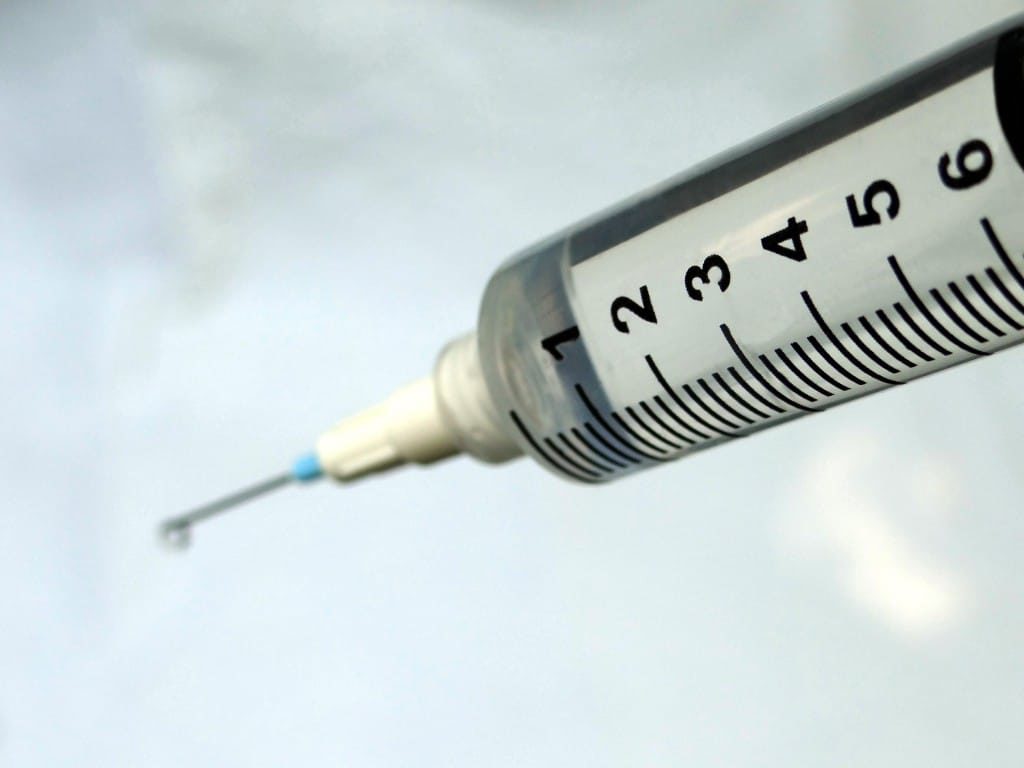
Ultimately, we have found the following to be true:
- For men with symptoms of Low T and confirmed low testosterone levels, treatment works
- Treatment typically begins to work some time before the 3rd week, but response becomes more noticeable after the first month
- Symptoms of decreased sex drive can be expected to improve first
- Most men on TRT report improved mood by the 6th week of therapy
4.b. Effects of TRT on Psychosocial Parameters
In the study titled, “Timetable of effects of testosterone administration to hypogonadal men on variables of sex and mood” (Jockenhovel, Minnemann, et al, The Aging Male, December 2009: 12 (4): 113-118), 40 men with testosterone levels definitively established as low were evaluated for timing of response to therapy.
Specifically, the researchers wanted to know how long it took for men to experience improvement in total numbers of erections and ejaculations, indicators of improved libido such as sexual thoughts and fantasies, and perceived sexual interest/desire and satisfaction with their sex lives.
Additionally, several psychosocial parameters were measured looking for changes such as levels of agitation, aggression, depression, listlessness (avoidance of activity), sociability, and activation.
Activation, by the way, is defined by Britannica Online Encyclopedia as the “stimulation of the cerebral cortex into a state of general wakefulness or attention.”
Essentially, you can think of activation as concentration and alertness in this context.
It is important to note that this study only evaluated patients at three-week intervals, so any symptomatic change occurring before that point could not be documented. For the psychosocial effects assessed by the study, anxiety levels, aggression, and sociability all showed significant response at three weeks after the start of therapy.
The scoring for all three of these parameters continued to improve over the next 9 weeks, all plateauing around week 12.
When considering aggression, it is worth noting that when a man’s testosterone level is normal, he is usually appropriately aggressive. A total lack of aggression is most often a social liability and can sometimes lead to missed opportunities, especially in the workplace.
On the other hand, “roid rage,” which is frequently associated with anabolic steroid abuse (and the supraphysiologic levels that ensue), occurs in the setting of extremely elevated levels of testosterone.
This is not something seen when TRT is managed responsibly and safely. The goal should always be to improve symptoms while improving testosterone levels from deficient levels to normal ones.
Depression and listlessness both decreased substantially by week 6 and remained fairly steady thereafter.
For agitation and activation, both of these measurements showed sharp improvements at 9 weeks and stayed relatively stable thereafter.
Talk to a TRT expert and get back to feeling the way you're supposed to.
Now serving patients in all Texas cities.
4.c. Effects of TRT on Sexual Function
In the study mentioned in the section above, sexual function was evaluated by tracking:
- spontaneous erections
- total erections
- ejaculations
- frequency of sexual thoughts/fantasy
- intensity of sexual desire
- overall satisfaction with sex life
For the three measurements of sexual function, men reported positive changes for all at their 3-week evaluation. The number of spontaneous and total erections, as well as the number of ejaculations, increased to stable levels between weeks 12 to 21.
Sexual thoughts and fantasy rose considerably by week three and remained at levels approximately double initial scores thereafter. Sexual desire followed a similar track, reaching a plateau around the 9th week.
Finally, satisfaction with sex life rose sharply by the 3rd week and continued on a dramatic rise through week-30 when the study concluded.
Talk to a TRT expert and get back to feeling the way you're supposed to.
Now serving patients in all Texas cities.
4.d. The Testosterone Replacement Therapy Timeline — Conclusions
As the study mentioned in the sections above says:
“Treatment of hypogonadal men (men with Low T) with testosterone is rewarding for the patients as well as the physician. The patient experiences, to his satisfaction, profound changes in his physical appearance and his mental make-up. The attending physician observes the changes the patient undergoes and rarely fails to be fascinated by the multitude of functions testosterone appears to have in [the] process of masculinization in the broadest sense.”
The researchers behind this journal article looked only at sexual functioning and mood. There is often much more that is negatively impacted by Low T.
Talk to a TRT expert and get back to feeling the way you're supposed to.
Now serving patients in all Texas cities.
5. Managing Your TRT Long Term

Unfortunately, TRT cannot help your body create testosterone on its own again.
Once you’ve chosen a provider, started therapy, and gotten your symptoms under control, you’re probably in for the long haul. Sticking to your treatment plan and following your provider’s recommendations is critical to long-term success.
That’s why choosing your provider is so important. You need a provider who is reliable, dependable, and able to keep up with your ongoing therapy.
Your provider should test your blood repeatedly (anywhere between once a month to once a quarter), and they should also know about other types of hormone replacement therapy and be willing and able to manage your other hormones as necessary.
Your treatment plan will be tailored to your unique needs, but those needs can change over time. Regular blood tests ensure your therapy can be altered to meet your body’s changing needs.
Talk to a TRT expert and get back to feeling the way you're supposed to.
Now serving patients in all Texas cities.
6. Testosterone Replacement Therapy (TRT) — Available Treatment Methods
To quickly recap, the first objective of TRT is to raise testosterone levels into a normal range, but the overall goal is to improve the symptoms associated with that proven deficiency and to keep those levels there.
6.a. Low T Medication and the Goal of TRT
When you receive a dose of supplemental testosterone, your body absorbs, metabolizes, and utilizes the hormone, and this causes levels to fluctuate. The levels rise, the symptoms are eased, and you stay stable for a short period of time.
Then, unless levels are restored, the free testosterone in your bloodstream will be further metabolized (eventually into inactive metabolites), and your symptoms will return.
The challenge is to keep your testosterone levels in the optimal range — not too high, not too low — and that requires frequent administration of properly dosed Low T medication in one form or another and is only achieved with expert management.
Anyone embarking on TRT should realize that response to treatment manifests in different ways in different individuals. It depends largely on the symptoms you feel and will hinge on your commitment to consistency.
A healthy and factual understanding of available types of Low T medication can prepare you for a constructive conversation with your medical provider about which form of supplementary testosterone might be right for you.
Lab results, symptomatic response, and careful clinical medical decision making must all be considered to achieve the results you’re looking for.
Every method of delivering that supplemental testosterone compound has advantages and disadvantages that present themselves over the course of treatment.
Talk to a TRT expert and get back to feeling the way you're supposed to.
Now serving patients in all Texas cities.
6.b. The Most Reliable Low T Medication Choice — Injections
The Low T medication that medical providers have preferred for decades is called testosterone cypionate, delivered by means of intramuscular injection. The compound dissolves into the bloodstream over the course of several days.
With injections, your levels will elevate and plateau at about 48 hours, and then gradually decline over the coming days.
This schedule of injections is still the most accurate and consistent method on the market when it comes to keeping your levels within proper limits while addressing symptoms.
We don’t advise a “shotgun blast” approach to optimizing your testosterone levels; we prefer precision.
To stay within the “optimal” range for your body, you’ll need an injection on day 7 to restore levels and prevent them from dropping out of the desired range.
6.b.i. The Advantages of Testosterone Injections
Testosterone injections have long been the go-to method of delivery for the following reasons:
- They increase levels quickly
- They keep testosterone levels from going too high or dipping too low
- They are FDA approved
- They address symptoms while limiting risk
- They provide the most accurate dosing possible
- There is no chance of accidentally getting the medication into the body of another person
With an injection, it’s relatively easy to increase or decrease your maintenance dose by 10 mg or 20 mg. This allows us to put and keep your testosterone levels in the “sweet spot,” so to speak.
Talk to a TRT expert and get back to feeling the way you're supposed to.
Now serving patients in all Texas cities.
6.b.ii. The Disadvantages of Testosterone Cypionate
The primary drawback to testosterone injections is that they have to be administered every 7 days.
Some patients initially see those weekly visits to the clinic as an inconvenient disruption to their weekly activities.
This is why we are dedicated to phenomenal care with a focus on efficiency, all so that you can get in and out for your weekly injection as quickly as possible.
6.b.iii. A Testosterone Cypionate Injection Schedule Is the Best Therapy for Low Testosterone

At TCT, we recommend testosterone injections over all other forms of Testosterone Replacement Therapy.
We have consistently found that the benefits of injections far outweigh the risks for the majority of patients.
However, to ensure the safety of our patients, we extensively test everyone who comes in to make sure injections are right for them.
6.c. Topicals, Sublingual Testosterone, Pellets, and Why We Avoid Them
Some patients are not candidates for traditional low testosterone therapy and may benefit from topical (AndroGel, Testim, Axiron, Fortesta) or hCG therapy.
For some patients, gels or other topical preparations can absolutely work if managed carefully and appropriately.
However, if you are in regular contact with other people, especially at home, topicals may not be a good option as they can be transferred accidentally to loved ones.
Talk to a TRT expert and get back to feeling the way you're supposed to.
Now serving patients in all Texas cities.
6.c.i. Topicals: Creams, Gels, Patches
This category includes all the methods of delivery that involve absorption through the skin (called transdermal).
The main reason patients choose topical medications is the ease of administration — no needles.
Available by prescription from your medical provider, you pick up this medication at your pharmacy and apply it daily to the skin on your shoulders and upper arms after showering.
It’s simple in concept, but the drawbacks are concerning.
The most important reason we don’t recommend topicals first: Some men receive little or no benefit from topical methods of delivering supplemental testosterone.
In fact, some studies have suggested a failure rate of approximately 50% in men using topical forms of testosterone.
Simply put, these men aren’t happy with the results of their treatment because the medication is not working in the way that it should, owing to the inability of 30-40% of men to even absorb enough of the medication to improve their testosterone levels.
Here are other reasons we don’t usually recommend topical methods for administering supplemental testosterone:
- Skin irritation (dermatitis)
- Odor
- Difficulty in adjusting doses — with topicals, it’s extremely difficult to modify a maintenance dose by a few milligrams
- Expense — brand name topicals tend to be very costly
- Accidental transference to others through physical contact
The medical literature is filled with incidents of accidental transference of topical medications to a spouse or child, and we’ve even seen it ourselves.
In one case, an individual being treated by another medical provider was on a topical when they reported a small growth of pubic hair in their daughter, who was less than 2 years old.
This unnatural change in his very young daughter was the result of testosterone absorption. When he was holding his daughter, she was absorbing the testosterone medication that was still on his skin.
In more severe cases, there have been reports of changes to children’s genitalia.
These risks are real.
Talk to a TRT expert and get back to feeling the way you're supposed to.
Now serving patients in all Texas cities.
6.c.ii. Summary of Topicals
We usually don’t recommend topicals because they:
- Are expensive
- Are often uncovered by insurance
- Are often not absorbed properly (or, for some people, are not absorbed at all)
- Often do not reach proper therapeutic levels (because they’re not being absorbed)
- Can be accidentally absorbed by other people, often family members and vulnerable children
- Must be applied daily
However, they have a few benefits:
- Carry the same risks as other forms of TRT (i.e. the same risks as a testosterone cypionate injection schedule or implantable pellets)
- Can be applied at home, and so are often seen as much more convenient
- Are FDA approved
6.c.iii. Sublingual Testosterone
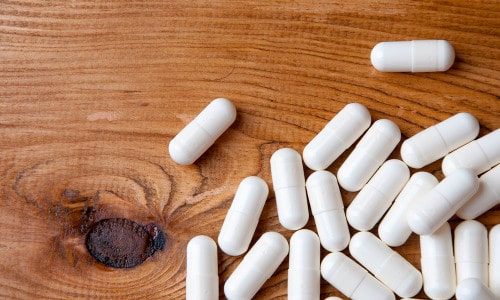
Sublingual Low T medication is held under the tongue or between the gums and cheek so it can be absorbed into the bloodstream through the mucous membranes that line your mouth.
Similar to the topicals above, it’s convenient and is absorbed the quickest of all forms.
However, we never prescribe it to our patients.
The reason is simple: We know that, with sublingual testosterone, testosterone levels will typically spike quickly.
Quick spikes are typically accompanied by rapid conversion of testosterone into estradiol, which as you probably know, is a type of estrogen.
For men to benefit the most from any form of Testosterone Replacement Therapy, we want to get a wide ratio between levels of testosterone and estradiol.
With oral forms of testosterone, including sublingual testosterone, not only do we see a rapid spike in testosterone levels, but we also see them plummet relatively quickly. To borrow an old adage, what goes up must come down.
That means fatigue, irritability, and low mood can come and go in frequent peaks and valleys.
Also, we know that oral forms of testosterone can have harmful effects on the liver. This form of TRT is definitely not recommended for people with a history of liver problems.
Sublingual testosterone is also only available from compounding pharmacies, which, given the low level of regulation of compounding pharmacies in the U.S., means that it is very hard to guarantee the quality of the drug that you receive.
Results for absorption of sublingual testosterone also vary widely from person to person.
In summary, there’s just too much up and down going on to feel comfortable with the safety of this form of Low T medication, which is why we never recommend sublingual testosterone at Testosterone Centers of Texas.
Talk to a TRT expert and get back to feeling the way you're supposed to.
Now serving patients in all Texas cities.
6.c.iv. The Most Popular Form of Low T Medication — Testosterone Pellets
Finally, there are hardened testosterone pellets that are implanted under the skin, intended to stay in your body for 4–6 months.
These testosterone replacement pellets were originally conceived to help with patient compliance — compliance basically means taking the medication the way you’re supposed to take it.
6.c.v. Pellet Positives
The idea was simple — create a time-release testosterone product and implant it in the body.
It’s impossible to forget to take this form of Low T medication since it’s an implant.
In theory, it conveniently takes care of itself.
Unfortunately, this hasn’t worked well in practice, and we find that the “time-release” mechanism does not perform as expected.
6.c.vi. Pellet Negatives
The main problem with testosterone replacement pellets is that these pellets don’t work the way they’re supposed to.
Although they’re supposed to be the simple answer to patient compliance issues, testosterone pellet implants have a number of complications, including the following:
- The need for surgical implantation
- Infection at the point of implantation
- Pellet extrusion (Your body may discharge the pellet)
- Poor absorption and performance for some patients
In other words, they can be a much bigger pain than the tiny prick of testosterone injections.
That’s not all.
When the surgical procedure that is necessary to implant the testosterone pellets under your skin is complete, all the medication that you have been given begins to absorb.
During the course of a single pellet treatment, patients experience a short period of unnaturally high testosterone levels that’s followed by a 3-4 month plummet towards the threshold of experiencing low testosterone symptoms again.
What does that mean?
During the early period, when your testosterone levels are well above what the human body might normally produce, there’s a substantial increase in risk for side effects, like blood thickening, high estradiol levels, fluid retention, mood swings, and the like.
Again, our preferred approach is to keep your hormone levels as stable as possible and to avoid as little fluctuation as possible, which is the primary reason we recommend against testosterone replacement pellets — this pattern simply isn’t as stable as injections.
A final problem with pellets is that some insurance carriers will not cover them unless an individual has “failed” two other forms of treatment (and note that this only applies to the FDA-approved form of testosterone pellets, Testopel — BioTE pellets are not FDA approved and will not be covered by insurance).
6.c.vii. Summary of Pellets (Not Recommended)
Pellets have a variety of problems. They:
- Generally do not work as advertised
- Can be extruded by your body
- Do not have a proper time-release mechanism, leading to testosterone levels that are too high for the first month (inviting risk) and levels that are too low a few months later (so not addressing symptoms)
- Not all forms are covered by insurance
- Not all forms are FDA approved
Talk to a TRT expert and get back to feeling the way you're supposed to.
Now serving patients in all Texas cities.
6.d. A Few Words About Bioidentical Hormones and Pellets (BioTE Pellets)

“Bioidentical” testosterone has been marketed as somehow better, safer, more effective, better absorbed by the body, and so on, by using excellent marketing phrases like “natural, non-chemical, and pure.”
It can be really convincing when a clinic or service says something like this:
“We only use bioidentical testosterone, which most closely resembles the natural hormones produced by your body, because they exhibit better absorption and have a lower risk of side-effects.”
Are those claims true? What are bioidentical hormones doing that FDA-approved testosterone isn’t?
By using the term “bioidentical,” the manufacturers and providers of these treatment options would have you believe that they are offering an organic, non-pharmaceutical option for Testosterone Replacement Therapy, and they state it as if using that form of treatment is the only way to give your body something it recognizes.
The fact is, testosterone injections, topicals (gels/creams), and pellet implants all utilize an FDA-approved formula that is not “bioidentical” — “bioidentical” is something of a hormone myth.
The real question should be, “Will my body recognize and react to the FDA-approved medication that you prescribe in the same way it would react to naturally occurring hormones?”
The answer is YES!
While the testosterone used in both standard prescription medications and compounded creams, gels, and pellets is more biomimetic (behaving like its natural counterpart) than bioidentical, the brain does identify and react to this testosterone the same way it would if you were producing the testosterone naturally.
Understand that even with “bioTE” pellets, you are not receiving an “all natural” testosterone.
It is true that they use a natural source for the raw ingredients (plant sterols), but those ingredients must still be manipulated in a lab and then compounded in a sterile pharmacy to make them appropriate for human treatment, so claims that they are identical to your body’s natural hormones is plainly misleading.
These compounded medications are not approved by the FDA and are therefore not covered by insurance.
Talk to a TRT expert and get back to feeling the way you're supposed to.
Now serving patients in all Texas cities.
6.d.i. Bioidentical Hormones Are Custom-Engineered and Mixed for You — TRUE, But…
There’s a giant flaw in this thinking, pointed out in this article by the Mayo Clinic: The doses are often based on saliva tests.
There is a long argument about why this test is supposedly better, but the bottom line is that hormone levels in your saliva may not accurately reflect what is going on inside your body — the test which determines the ingredients is inferior and may be wrong from the start.
Not all of this means that bioidentical hormones are bad, but the marketing of bioidentical testosterone products is definitely questionable.
In short, the smoke-and-mirrors presentation surrounding their effectiveness and safety blurs the picture with questionable or outright misleading claims of superiority over more traditional testosterone therapies.
No matter what the marketing claims, testosterone replacement pellets simply aren’t as reliable as advertised, and are certainly no match for the precision provided by a weekly schedule of testosterone cypionate injections.
6.e. Avoid Boosters, Testosterone Pills, and Over-the-Counter Testosterone Enhancers
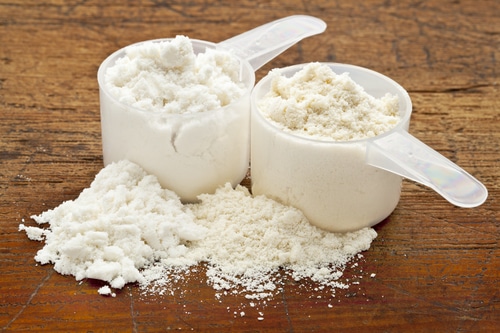
If you can get an OTC testosterone pill or powder that lasts you for weeks or months and that you can take in the comfort of your own home, why bother with topicals, pellets, or weekly injections?
The attraction of convenience is understandable, but there are plenty of reasons not to go that route.
Boosters are dietary supplements. They’re nothing like the highly regulated sterile prescription injectables that legitimate hormone replacement providers prescribe.
There are dozens and dozens of these “products” on the market (and I hesitate to call them such and thus lend them legitimacy). They’re made by a variety of companies, and it’s largely up to the companies selling these products to ensure your safety.
The FDA regulations that do exist to regulate these supplements are at times inadequate and are generally not well enforced.
They could contain just about anything, and it’s entirely possible these products don’t contain any of the ingredients they claim to.
It’s only been a short time since multiple retailers were found to carry adulterated dietary supplements.
At best, OTC testosterone boosters will be inert and fail to address your symptoms.
At worst, they could damage your health. Let’s not forget what happened with Ephedra before it was banned.
Sterile testosterone injectables require an incredible amount of oversight and testing to produce, as do all other FDA-approved hormone preparations. Testosterone boosters simply don’t have that oversight, which means they could basically contain anything.
Talk to a TRT expert and get back to feeling the way you're supposed to.
Now serving patients in all Texas cities.
6.e.i. Because You’re Not Seeing a Medical Provider, Any Side Effects You Experience From Testosterone Boosters May Go Unnoticed
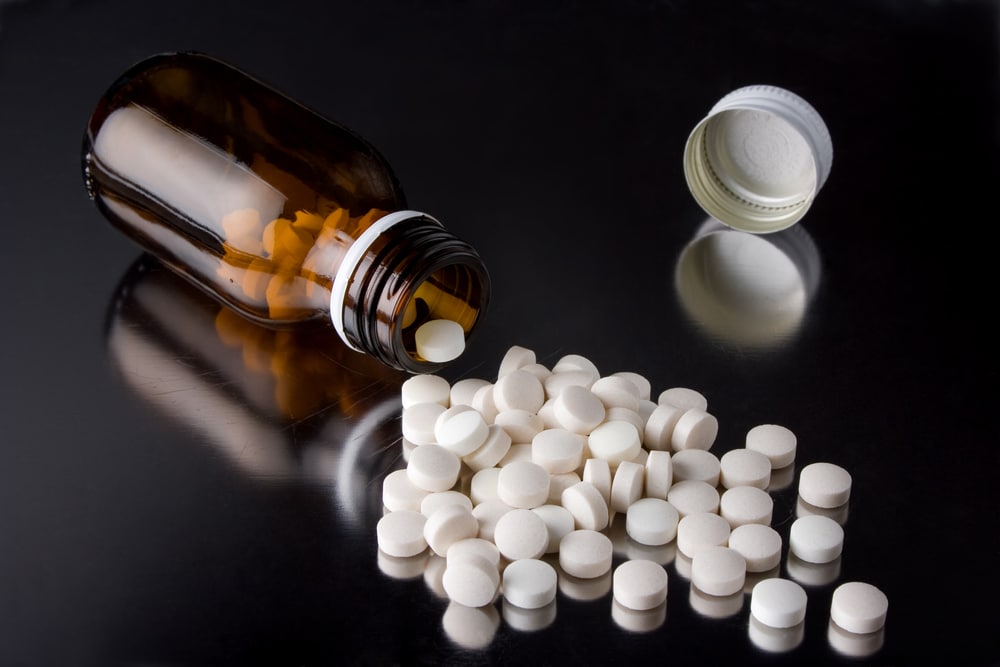
Let’s pretend, for the sake of the argument, that OTC testosterone supplements work (they don’t) and that they are safe (they’re not — they’re actually very dangerous for your liver).
Even if those supplements worked as advertised, there’s another, potentially worse issue:
You’re not being monitored.
Hypogonadism (having low testosterone, estrogen, or other hormones) is a medical condition, and it requires medical treatment.
Even if a particular supplement worked and wasn’t directly dangerous, you wouldn’t know what they were actually boosting your testosterone levels up to or with because your levels aren’t being accurately monitored.
When you come into one of our clinics, we evaluate you very carefully, through a series of rigorous tests, to determine if you suffer from hypogonadism. If you begin therapy, you’re evaluated regularly to ensure you’re responding to treatment.
If you report side effects, we adjust. Our clinical experience informs what we adjust, how we adjust it, when we adjust it, why we adjust it… and it may not be simply testosterone that we adjust.
Therapy isn’t a simple matter of increasing or reducing a single hormone. As treatment continues, it may be necessary to change the dose or type of treatment over time.
This isn’t something you can safely do yourself with any level of precision. You would have to constantly test your own testosterone levels, which is a practice fraught with its own issues.
You easily could end up taking far too much, boosting your testosterone levels beyond what your body needs, and inducing some very serious side effects.
Talk to a TRT expert and get back to feeling the way you're supposed to.
Now serving patients in all Texas cities.
6.e.ii. OTC Testosterone Pills and Supplements Don’t Work
The reason they don’t work is simple: Testosterone is not something you can simply ingest through your stomach.
Ingesting testosterone through your stomach can cause severe liver damage. According to several doctors interviewed in this article:
“Users of oral (typically, over-the-counter) testosterone supplements… should be wary… Some over-the-counter forms of testosterone taken orally are known to cause liver damage when the supplements are metabolized….”
Your body is supposed to create its own testosterone. Testosterone is not a compound that your body evolved to ingest directly.
Even if certain foods can help raise testosterone levels, they can only raise your body’s ability to create its own testosterone.
They can’t increase your testosterone directly, and the same is true for these OTC testosterone supplements.
The best effect these supplements can achieve is to increase your body’s ability to make more testosterone.
If you value your liver (and your life), OTC testosterone supplements are something to stay away from.
6.e.iii. Prescription Testosterone Pills Are Flat-Out Dangerous
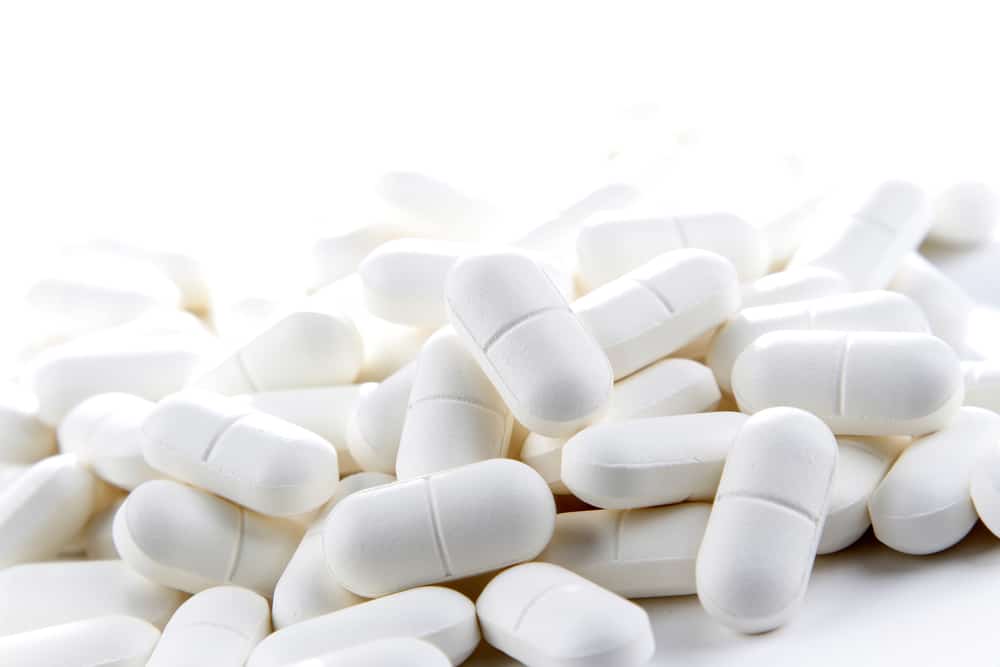
Much of this is the same — prescription or OTC, ingesting testosterone through the stomach is ineffective or harmful.
The problem with many oral testosterone medications is twofold.
First, most prescription testosterone pills are toxic to the liver. Obviously, this is a major issue. It’s no good getting your hormone levels under control if we damage your liver in the process.
For these same oral testosterone pills, the negative side effects actually go far beyond liver toxicity. Many also have some serious negative effects on your cholesterol levels and may actually contribute to the development of cancer.
Now, there are several different prescription testosterone pills out there, and not all of them have these same terrible side effects.
The problem with these other pills is that they just don’t work.
Of the remaining prescription testosterone pills on the market, most are simply not very effective. By the time they make it through your digestive system, they’ve lost a lot of their potency.
Talk to a TRT expert and get back to feeling the way you're supposed to.
Now serving patients in all Texas cities.
7. Benefits of Treatment — Goals of Treatment
Just as the symptoms of testosterone deficiency (hypogonadism) can vary widely, the same can be said about the benefits of Testosterone Replacement Therapy from patient to patient.
The goals of treatment are determined by the symptoms you’re experiencing. Your “normal,” or what you expect to feel like, has somehow taken a downturn, and you need to feel like “yourself” again.
The best-documented symptoms linked to Low T are fatigue and diminished libido. Therefore, it is no surprise that increased energy and a boost in sexual desire top the list of benefits.
When we talk about those benefits in detail, patients are surprised that healthy testosterone levels can improve their lives unexpected ways. They often see gains in physical health, sexual performance, and even their sense of emotional wellbeing.
The benefits of TRT often reach beyond just boosting energy and sex drive. It could potentially help to:
- Improve heart health
- Increase lean muscle production and strength
- Reduce fat tissue production
- Maintain bone density/strength
- Improve erectile function
- Increase sexual desire (libido)
- Improve urinary system function
- Improve mood and increase sense of well-being
- Reduce anxiety and improve concentration
- Increase energy and motivation
Some experts in the field cite testosterone’s natural anti-inflammatory effects as the reason why some men enjoy a reduction in joint pain.
Although the majority of our patients come to us for improvement in 1 or 2 of these categories, they are often pleasantly surprised by improvements in other areas they hadn’t even associated with low testosterone.
Talk to a TRT expert and get back to feeling the way you're supposed to.
Now serving patients in all Texas cities.
7.a. Four Physical Health Benefits of Testosterone Replacement Therapy
There are 4 major physical health benefits that can come from TRT:
- Possibly improved heart health
- Increased lean muscle production
- Reduced fat tissue production
- Better bone health
7.a.i. Possibly Improved Heart Health
A number of studies have been done on the effects of testosterone on the heart.
While some seemed to show negative effects, a very large study of over 6300 patients treated with testosterone found testosterone had a mild protective effect on the heart—read the study here.
It seems that the protective effect is mostly related to heart attacks and not necessarily to other types of heart issues.
Research related to the connection between TRT and heart health has increased lately.
In a summary of recent research published by the Mayo Clinic, the authors found evidence that men receiving TRT were at lower risk of death due to heart attack than those not receiving therapy.
Another study of over 6300 patients suffering from low testosterone found that TRT could have a mildly protective effect on men who already had an increased risk of cardiac arrest.
While research is ongoing, these potential benefits are good news for men’s overall health.
One more point to note here is that any reputable TRT treatment program will involve frequent, thorough blood tests. Detecting any abnormality early is the best form of prevention.
Talk to a TRT expert and get back to feeling the way you're supposed to.
Now serving patients in all Texas cities.
7.a.ii. Increased Lean Muscle Production
Another study found that one of the benefits of Testosterone Replacement Therapy was increased muscle mass. The study on 76 older men (which you can read more about here) found a small increase to lean muscle mass for men on Testosterone Replacement Therapy compared to the control group.
But that’s just the beginning. If testosterone increases muscle mass slightly without any sort of exercise routine, imagine what it might do combined with strength training.
Does this mean you can get back into the kind of shape you were in throughout high school? Probably not.
But it does mean you can fight the slow decline in your muscle mass that hypogonadism (Low Testosterone) causes.
Lean muscle production becomes less efficient, and overall muscle mass declines, as men age. Suffering from clinical hypogonadism will make the problem worse.
As TRT restores your testosterone levels to the optimum range specific to your body, studies show you can expect this trend of losing muscle mass to slow and possibly reverse. A slight increase in muscle mass was seen in older men without increasing exercise, which may lead to a decreased risk of the frailty that often haunts men as they age.
Although you’re not going to become a competitive bodybuilder or return to your high school physique just because you have normal testosterone levels again, some extra effort in the gym or on the trails will likely produce better results for your appearance than you’ve been seeing lately.
Talk to a TRT expert and get back to feeling the way you're supposed to.
Now serving patients in all Texas cities.
7.a.iii. Reduced Fat Tissue Production
The same study above (click here to check it out) also found that testosterone injections benefit not just your muscles, but also your body fat levels—by decreasing them.
The same men who experienced a slight gain in lean muscle mass experienced a more significant reduction in body fat.
As we age, our body fat levels naturally go up. However, low testosterone can make this issue much worse. Weekly testosterone injections often result in many of our patients losing visceral body fat, the most dangerous type of fat found around the stomach.
As testosterone declines, men’s hormone balance alters. Estrogen levels become comparably higher, which leads to an increase in adipose tissue (the technical term for fat).
Yes, guys, you have estrogen. It’s normal, and it’s necessary for your body.
That means you can expect a “spare tire” or squishy midsection to be harder to work off and keep off.
Healthy testosterone levels will signal the body to burn fat and instead produce lean muscle.
Although expecting overnight miracles would be unrealistic, it’s true that the physical health benefits of Testosterone Replacement Therapy exist and will have an effect on you over time — in a sense, your body will stop working against you.
A healthy hormone balance keeps your body tuned to produce more muscle and less fat, which can lead to a healthier self-image and higher perception of quality of life.
7.a.iv. Better Bone Health
Yet another casualty of the aging process is bone density.
A study of 36 men with hypogonadism found that testosterone may help with bone density issues.
It also may reduce bone remodeling (a process by which our bones reform, generally not in ways we want).
Talk to a TRT expert and get back to feeling the way you're supposed to.
Now serving patients in all Texas cities.
7.b. Three Sexual Performance Benefits of Testosterone Replacement Therapy
There are three major benefits that can result from Testosterone Replacement Therapy:
- Fewer episodes of erectile dysfunction
- Increased libido
- Better urinary system functioning
7.b.i. Fewer Episodes of Erectile Dysfunction
Losing the ability to achieve an erection and physically perform in the bedroom is a particularly distressing symptom that can occur in men suffering from low testosterone. Resolving an ED issue is often their highest treatment priority.
Although severe ED (erectile dysfunction) is usually caused by problems related to blood flow, suffering from Low T may increase the time needed to develop an erection, which strongly resembles ED.
In fact, many men who suffer from low testosterone are surprised to find that treatments for ED using drugs like sildenafil (Viagra) are not always effective. Those treatments don’t address low testosterone levels.
When a man’s hormone levels are restored to balance through a treatment plan that includes TRT, many men see a rapid improvement in their physical ability to perform sexually.
7.b.ii. Increased Libido
Though often confused with your physical ability to have sex, the term libido refers to your desire to have sex. It’s also referred to as your sex drive.
Testosterone levels strongly affect the ability to become sexually aroused. That means men suffering from Low T often experience a decrease in the desire to have sex. They may even lose the desire to have sex completely.
In these circumstances, many men feel their manhood has been seriously threatened or tarnished, but Testosterone Replacement Therapy often achieves an increased sexual arousal and a restored sex drive after only a few weeks.
Talk to a TRT expert and get back to feeling the way you're supposed to.
Now serving patients in all Texas cities.
7.b.iii. Better Urinary System Functioning
Although not truly a sexual function, proper function of the prostate connects both sexual and urinary performance.
A very recent study conducted at Boston University Medical Center found a significant improvement in both sexual and urinary function (as well as improved perception of quality of life) for more than 650 hypogonadal men who underwent long-term Testosterone Replacement Therapy.
The men who participated in the study, all in their 50s and 60s, reported the following negative occurrences prior to receiving Testosterone Replacement Therapy:
- Frequent urination
- Incomplete bladder emptying
- Weak urinary stream
- Poor sleep due to waking up at night to urinate
After receiving long-term TRT treatments, participants in the study reported a drastic decrease in these unpleasant symptoms and a significant improvement in urinary performance.
7.c. Three Mental Health Benefits of Testosterone Replacement Therapy

It’s equally important to mention that restoring healthy testosterone levels can increase your mood and sense of contentment. Men on Testosterone Replacement Therapy may experience these three benefits:
- Improved mood
- Reduced anxiety
- Increased energy
Relief from dysthymia (a low mood or mild depression), mild anxiety, and fatigue can restore vitality and an overall sense of wellbeing in men who have been suffering from chronic low testosterone.
Though emotional health isn’t always men’s initial focus, a more positive and energetic feeling about life is a welcome change for many men who undergo Testosterone Replacement Therapy.
Men who find such benefits through TRT are glad to be back on top of their game at work and in life.
Your total testosterone score should not be the goal. The goal should be for you to feel better and experience relief from your symptoms.
Talk to a TRT expert and get back to feeling the way you're supposed to.
Now serving patients in all Texas cities.
8. Is Testosterone Replacement Therapy Safe?
Generally speaking, TRT is a very safe endeavor when managed appropriately in the right individual. The benefits often far outweigh the potential risks.
Just like any form of medical therapy, there are potential risks and benefits which must be weighed on an individual basis.
Each of our clients is subject to an extensive medical history review and evaluation prior to TRT even being considered.
Unfortunately, we see new clients every day whose work-up and/or treatment plan were not appropriate and sometimes do not even satisfy routine, standard-of-care recommendations.
Testosterone Replacement Therapy isn’t a new treatment, but with increased public awareness and current medical research that has debunked many of the myths surrounding some of the possible side effects associated with TRT, large numbers of men are seeking and receiving this treatment.
Testosterone Replacement Therapy that is appropriately managed and closely supervised can be both safe and effective for someone who truly needs it.
We’d like to be perfectly clear that potential side effects are often negated or minimized by utilizing:
- Appropriate treatment plans
- Close clinical monitoring
- Application of preventative medicine
- Routine lab assessment
It’s important to ensure that your healthcare professional understands the intricacies involved with the minimization of the potential risks while seeking to maximize the potential benefit.
Talk to a TRT expert and get back to feeling the way you're supposed to.
Now serving patients in all Texas cities.
9. Side Effects of TRT
Just as with any other medical treatment, there are possible side effects associated with Testosterone Replacement Therapy.
Whether TRT is beneficial or not is largely dependent upon how the medication is delivered and dosed.
Those who abuse testosterone and other androgens may experience significant and even life-threatening side effects.
Somewhat similarly, if treatment of Low T is mismanaged or not carefully monitored, patients will experience a higher rate and increased severity of adverse reactions, or possibly a complete lack of meaningful results.
9.a. Why Side Effects Occur With Testosterone Replacement Therapy (TRT)
Some side effects seen with TRT are the direct result of the use of exogenous testosterone (testosterone not made naturally in the body).
Many occur only in the presence of higher testosterone levels, and still others are simply the consequences of the body’s normal metabolism of testosterone.
This metabolism, or break down of testosterone, occurs in the same manner for both exogenous and endogenous testosterone (naturally produced testosterone), but because of an increased abundance of testosterone this may lead to higher than normal levels of these metabolites.
Talk to a TRT expert and get back to feeling the way you're supposed to.
Now serving patients in all Texas cities.
9.b. DHT and Estradiol
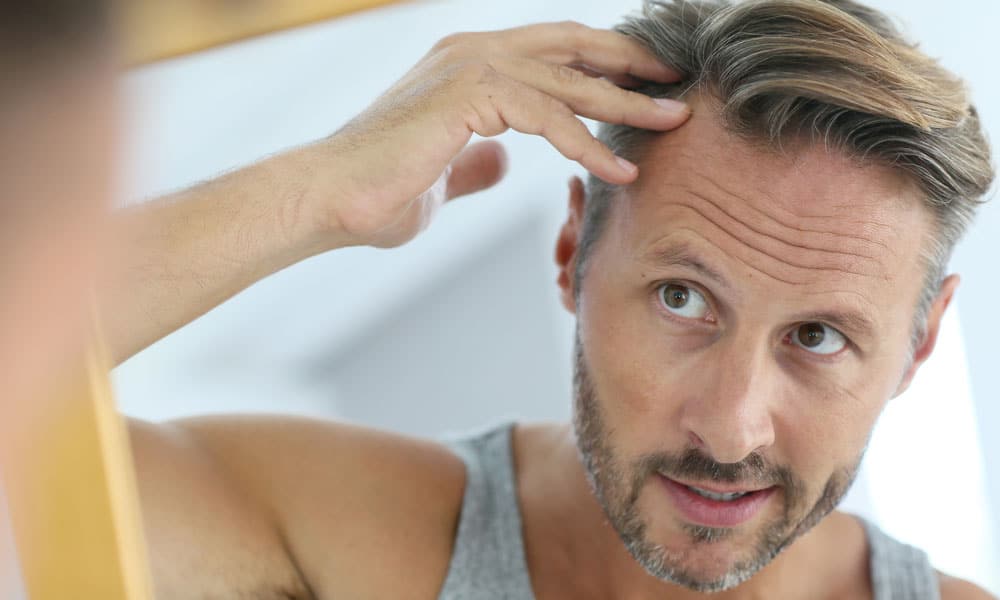
Normal metabolism of testosterone results in its conversion into two primary metabolites, dihydrotestosterone (DHT) and estradiol (E2, a form of estrogen).
Elevated levels of DHT can cause benign growth of the prostate, increased oiliness of the skin and acne, as well as male pattern balding. Abnormal increases in estradiol can lead to mood swings, breast tissue changes, and fluid retention that may cause swelling or increases in blood pressure.
Furthermore, abnormal estradiol levels have been linked to lower testosterone levels, erectile dysfunction, and a decrease in free testosterone.
According to the 2010 update to “Testosterone Therapy in Adult Men with Androgen Deficiency Syndromes: An Endocrine Society Clinical Practice Guideline,” the conversion rate and subsequent ratio of testosterone to estradiol and DHT does not change when treating Low T via injection of testosterone cypionate.
These ratios may be negatively affected with other Low T treatments (gels, patches, pellets, etc.).
The following side effects are possible, but occurrences can be significantly reduced (or prevented entirely) through consistent monitoring of your major hormone levels and expert dosing procedures:
- Changes to the prostate (TRT has NOT been shown to cause cancer)
- Increased oiliness of the skin and acne
- Breast tissue changes (can usually be avoided with preventative medicine)
- Mood swings
- Fluid retention
- Increased hematocrit and erythrocytosis (blood thickening)
Talk to a TRT expert and get back to feeling the way you're supposed to.
Now serving patients in all Texas cities.
9.c. Testosterone, Hematocrit Levels, Erythrocytosis, and High Blood Pressure
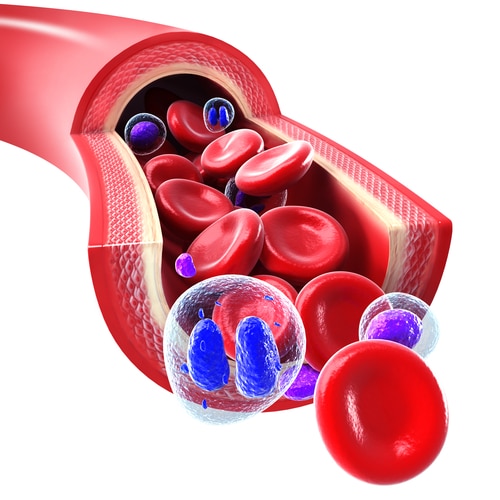
What is the link between Testosterone Replacement Therapy and high blood pressure?
At the “heart” of cardiovascular disease lies the propensity of the body to form clots and blood pressure changes. Blood pressure changes often arise when blood becomes thicker. The true issue at hand is how testosterone affects the thickness of blood.
Red blood cells represent the solid component of blood. They’re suspended in the liquid component of your blood: Plasma.
If you increase the solid portion, but don’t increase the liquid portion (plasma), the solution becomes thicker. This higher viscosity blood exerts more pressure on the cardiovascular system.
An increase in solid blood cells suspended in the same amount of liquid plasma leads to thickening or increased viscosity of your blood — a condition called erythrocytosis or polycythemia.
9.c.i. How High Hematocrit Levels May Affect Your Health
If you’re taking supplemental testosterone without proper supervision or precautions, the risks of high blood pressure can definitely increase.
Testosterone has a suppressive effect on a peptide hormone called pepcidin. It was only recently discovered, but it is known to be a regulator of iron absorption. It is primarily made in the liver, and when suppressed, it can lead to increased iron stores in the blood.
Increased iron in the blood signals your bone marrow to work harder at its job, producing more red blood cells.
Red blood cells carry hemoglobin, and hemoglobin transports oxygen to your organs.
More oxygen can be a good thing, but an overabundance of red blood cells can become counterproductive and even harmful over time. This increase is not changed by aspirin, coumadin, or other blood thinners.
Talk to a TRT expert and get back to feeling the way you're supposed to.
Now serving patients in all Texas cities.
9.c.ii. Testosterone and Hematocrit Levels — The Risks
If erythrocytosis does occur, it is typically rather easy to address. However if its assessment is overlooked, as is far too often the case, it can lead to potentially serious problems.
If you experience an increase in hematocrit values greater than 52.0%, your risk factors for abnormal clotting (such as thrombosis), strokes, hypertension, spleen enlargement, heart failure and other serious conditions increases.
However, the research shows that, although these concerns are logical, an actual increase in these life-threatening events has not been scientifically observed.
“If the hematocrit goes up too high, we worry about the blood becoming too viscous or thick, possibly predisposing someone to stroke or clotting events. Although, frankly, in a review that I wrote in the New England Journal of Medicine where we reviewed as much of this as we could, we found no cases of stroke or severe clotting related to testosterone therapy. Nevertheless, the risk exists…”
However, studies purporting that TRT causes this risky condition fail to answer some very obvious questions: Were any preventative measures were taken? Was anybody monitoring the overall health of these patients during the course of treatment?
Proper monitoring of hematocrit levels can help to prevent these potential side effects.
Talk to a TRT expert and get back to feeling the way you're supposed to.
Now serving patients in all Texas cities.
9.c.iii. Preventing and Treating High Hematocrit Levels
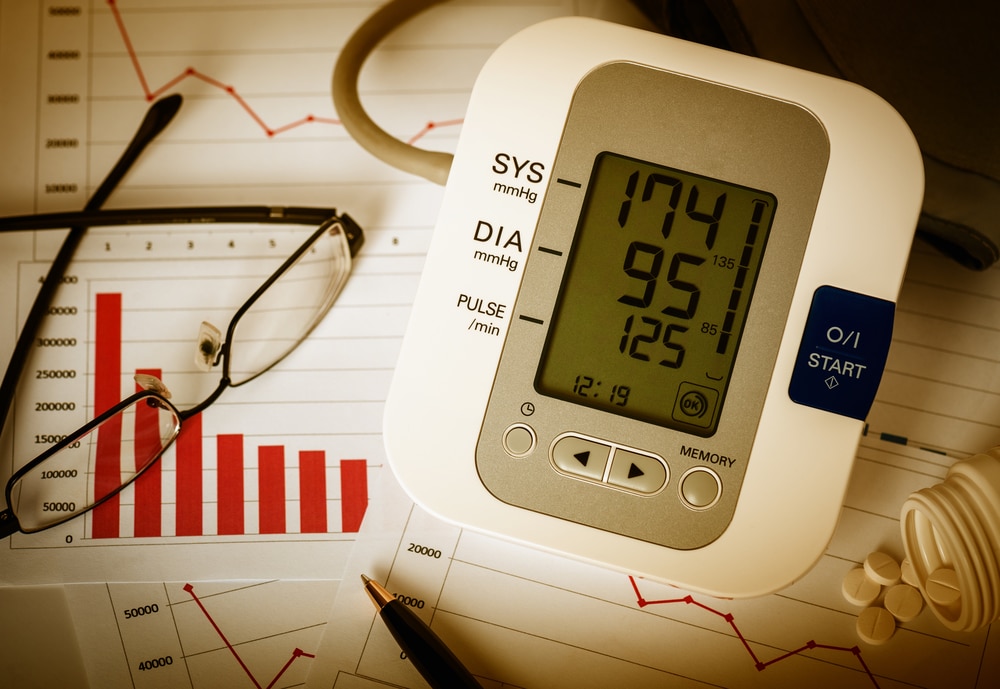
Detection of a potential problem before it becomes a health concern is the first step to preventing any negative side effects.
After all, improving your overall health is our main goal.
Careful and consistent monitoring of our patient’s hematocrit levels (the concentration of red blood cells suspended in the blood plasma) through frequent blood testing allows us to take action before unnecessary strain on your circulatory system occurs
9.c.iv. Adjusting TRT to Reduce Blood Thickening
The second step is finding the correct testosterone dosage.
Any significant increase in hemoglobin may be treated by altering how much testosterone you receive.
This should reduce erythrocytosis. If testosterone is stimulating an increase in red blood cells, we reduce the stimulus to a level more suitable for your body.
9.c.v. Donating Blood to Reduce Elevated Hematocrit Levels Caused by TRT
The third preventative measure is to treat increased hematocrit levels directly with a procedure called a therapeutic phlebotomy — removing a quantity of blood to restore the volume of red blood cells to a safer level.
In simple terms, excess red blood cells are removed in order to reduce viscosity and relieve potential exertion.
In other words, just donate some blood to the charity of your choice. It’s really that easy. It’s simple, it’s free, and it helps others, so it’s truly a win/win situation.
In a final note, smoking cessation and proper management of obstructive sleep apnea, if present, can also have a positive impact here. In both of these states, the body is deprived of full oxygenation on a consistent basis, and that can also increase red blood cell counts.
Talk to a TRT expert and get back to feeling the way you're supposed to.
Now serving patients in all Texas cities.
9.d. Testosterone Injections and Water Retention
You won’t be turning into a giant with TRT injections, but you might retain some extra water.
Mild fluid retention means you can expect to walk around feeling like you’ve just polished off a couple helpings of Thanksgiving dinner plus dessert for a bit.
This is typically short-term and can be treated as necessary.
9.e. TRT and Sleep Apnea
Obstructive sleep apnea (OSA) is a condition that TRT may initially worsen. The muscles of the throat relax and collapse during sleep, obstructing the breathing passage. The result is fragmented sleep.
Cautions about a connection between TRT and OSA appear frequently, but the scientific literature and research findings are inconsistent and methodologically flawed, which suggests that the connection is actually a weak one.
Heavy snoring and waking up suddenly during sleep are common symptoms indicating OSA.
Though not usually a longstanding effect, any changes in sleep patterns should be monitored.
During deep sleep, the body and brain work together to heal damage at the cellular level, so interrupted sleep or poor-quality sleep can contribute to various health problems over long periods of time.
Talk to a TRT expert and get back to feeling the way you're supposed to.
Now serving patients in all Texas cities.
9.f. TRT and Balding

Baldness and testosterone have been associated with each other for literally thousands of years.
Many people still believe that baldness and testosterone go hand-in-hand because it is rare for women to lose their hair.
However, the amount of testosterone in a man’s body has nothing to do with whether he will or will not develop male pattern baldness.
9.f.i. Balding and Testosterone Injections Are Not Related
Here’s the simple fact: Testosterone by itself doesn’t cause baldness.
There is a genetic basis to balding, and if you are genetically predisposed to lose your hair, you’re going to lose it regardless of your testosterone levels. By the time most men begin investigating Testosterone Replacement Therapy, it’s usually quite clear whether or not male pattern baldness has begun.
If you don’t have those genes, even elevated levels of testosterone are not going to cause you to lose your hair.
Men with male pattern baldness, which is scientifically known as androgenic alopecia, have genes that make their hair follicles weak, but weak in a specific way. They become very sensitive one of the byproducts of testosterone, known as dihydrotestosterone, often abbreviated to DHT.
An enzyme in your body breaks down testosterone, and DHT interacts with your hypersensitive follicles. The follicles are so susceptible to the action of this chemical that they slowly shrink and shut down.
The amount of shrinkage that occurs depends primarily on the follicles’ sensitivity to DHT, rather than the amount of this chemical in the body.
So, balding and testosterone are connected, but not in the way you would think.
Follicle sensitivity is determined by your genes. If your father went bald, then you are 2.5 times more likely to suffer from baldness yourself compared to someone whose father kept his hair.
It is also possible, although slightly less likely, that you will inherit the baldness patterns of your maternal grandfather.
You can read more about some of the research into this subject here.
The main takeaway here is that testosterone injections are not going to cause you to go bald.
When it comes to Testosterone Replacement Therapy, we’re not increasing your testosterone levels by huge amounts — just enough to get you back into a normal range — so it’s highly unlikely that this additional testosterone will cause baldness that would not have otherwise occurred.
The risks of Testosterone Replacement Therapy, in terms of baldness, are practically nonexistent.
While one of the side effects of too much testosterone can be hair growth, this is generally limited to the rest of the body.
Talk to a TRT expert and get back to feeling the way you're supposed to.
Now serving patients in all Texas cities.
9.g. TRT and Prostate Cancer
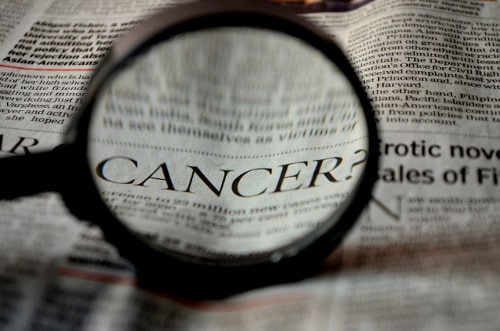
Cancer is the most often discussed and most exaggerated of all the potential side effects of Testosterone Replacement Therapy.
Despite the lack of a definitive connection over decades of study, the speculation and claims persist.
The 1940’s myth that Testosterone Replacement Therapy and prostate cancer are directly related began with a single-patient study on a possible connection between TRT and prostate cancer, which was conducted and documented by two doctors back in 1941.
In that nearly-80-year-old project, 2 researchers, Huggins and Hodges, observed a single case where lower testosterone levels due to castration or estrogen treatment caused metastatic pCA (prostate cancer) to regress. The use of supplementary testosterone caused pCA to increase.
Remarkably, this very flawed study (only one person studied) spawned concerns that TRT and cancer were directly connected.
Despite the large number of studies that have been conducted since, no concrete evidence of a cause-and-effect relationship between TRT and cancer has been found.
When speaking of any relationship between Testosterone Replacement Therapy and cancer, here’s what we do know:
- Long-term treatment with supplemental testosterone does not increase prostate cancer risk
- Routine lab testing associated with TRT may help with the early detection of prostate and other cancers
- Testosterone Replacement Therapy has a long list of other health benefits and treats many symptoms that reduce your quality of life
There’s a lot of upside to look into — there’s more good news than bad to focus on.
While there is concern that TRT might cause existing prostate cancer to worsen (the studies show mixed data), properly monitored administration of supplementary testosterone does not appear to cause prostate cancer in otherwise healthy men.
In fact, studies have suggested the exact opposite by demonstrating that men with chronically low levels of testosterone have a higher predilection towards developing the disease relative to men with normal T levels.
Current research appears to support a conclusion that runs counter to the myth. Optimal testosterone levels are associated with average rates of prostate cancer.
In addition, a recent study on Testosterone Replacement Therapy and prostate cancer found that, while TRT may not reduce the total number of cancer cases overall, men receiving TRT might be less susceptible to highly aggressive forms of prostate cancer.
A greater number of “favorable-outcome” cases, meaning tumors more likely to respond to treatment, were found compared to the more life-threatening varieties.
(See this article from European Urology and this article from the New York Times to learn more).
Unfortunately, some people live with the lifelong consequences of Low T due to outdated mindsets, to myths that are the result of ingrained fear and ways of thinking that are too deeply entrenched to be changed.
This is also problematic because testosterone therapy has potential benefits when it comes to the detection of cancer.
Talk to a TRT expert and get back to feeling the way you're supposed to.
Now serving patients in all Texas cities.
9.g.i. Early Cancer Detection
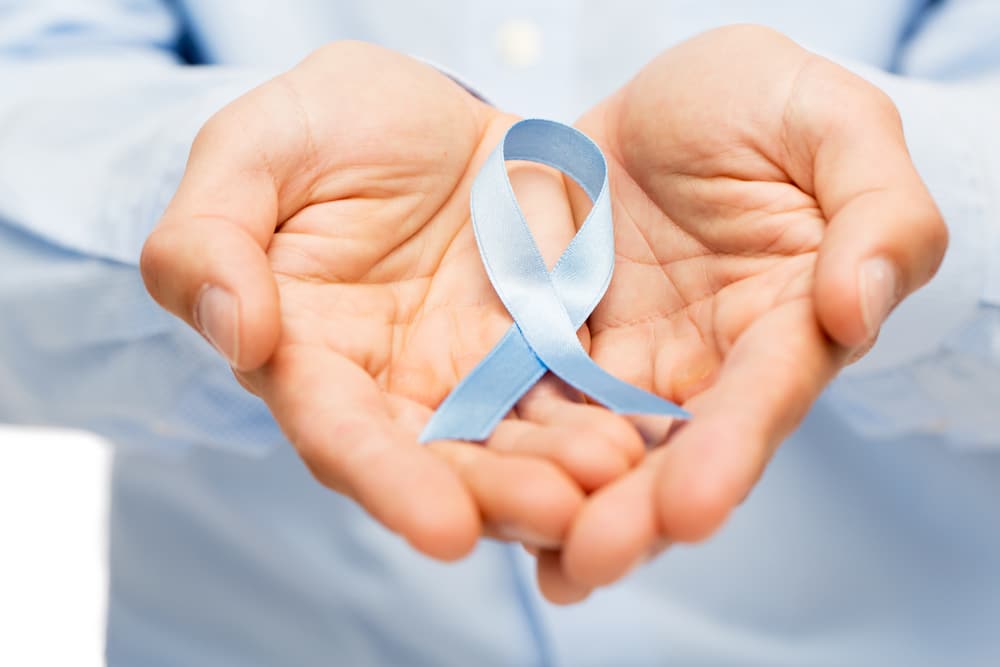
As you’re probably aware, early detection is paramount in improving one’s odds of beating practically any type of existing malignancy. In this way, Testosterone Replacement Therapy may actually play a role in cancer prevention.
When you receive Testosterone Replacement Therapy here at TCT, we start off your treatment by checking various markers in your blood.
Then, your blood is checked routinely (typically every 90 days) for any abnormalities concurrent with TRT, including careful monitoring of how your PSA level behaves over the course of therapy. We use a test called a PSA (Prostate Specific Antigen) Velocity test. Its purpose is to track changes over time.
Any significant elevation of PSA levels indicates the need for a thorough examination to determine the cause.
In fact, we check them so regularly that we can find evidence of an abnormality much sooner than it otherwise may have been detected.
We have seen a handful of these cases clinically. Had these men not initiated TRT and not underwent regular testing of their PSA level, these cancers may have gone undetected for years.
Though there might be some concerns (which are not fully substantiated by current research) about testosterone and cancer, either high or low, we believe far more pre-existing cases have been detected and treated in men undergoing Testosterone Replacement Therapy.
Talk to a TRT expert and get back to feeling the way you're supposed to.
Now serving patients in all Texas cities.
9.g.ii. Testosterone Can Cause Prostate Change

While prostate changes can occur with TRT, a study published in The Journal of Clinical Endocrinology & Metabolism in June of 2010, which looked closely at the adverse reactions reported in 51 other studies, found there to be no increased risk of the development of prostate cancer, prostate related urinary symptoms, or elevated PSA (prostate specific antigen).
That aside, because PSA is essentially a tumor marker for prostate cancer, patients with a first-degree relative who has been diagnosed with prostate cancer and those with an elevated PSA level should proceed with caution and be monitored closely.
For men with a personal history of prostate cancer, treatment for Low T is considered contraindicated according to most sources.
It is important to note that Testosterone Replacement Therapy does not “give” you prostate cancer, but certainly elevated testosterone levels (even to the normal range) can cause an otherwise unnoticed prostate lesion to grow more aggressively.
It is important to note that testosterone, in and of itself, is not a causative factor in the development of prostate cancer.
That myth has finally been debunked through countless studies over several years while more recent data now indicate that low serum testosterone levels are a potential predictor of high-risk prostate cancer.
The more interesting debate at this point is the potential consequence of increasing a man’s testosterone level, even to a normal range, in the presence of an existing prostatic growth.
The findings of multiple studies over the years have ranged from testosterone appearing to be associated with promoting the transition of a common, low-grade lesion into one of a more aggressive nature, to testosterone actually contributing to cell death of the malignancy, to no appreciable effect whatsoever.
Obviously the current data is inconclusive; however, it is becoming more and more apparent that, as we ponder the safest recommendations while peering through the lens of risk/benefit analysis, living with testosterone deficiency may indeed be the more risky endeavor.
Talk to a TRT expert and get back to feeling the way you're supposed to.
Now serving patients in all Texas cities.
9.g.iii. TRT and PSA in Detail — Will TRT Increase Your PSA Numbers?
The short answer is yes, but it’s not the danger you think it is.
PSA numbers are not as precise an indicator of prostate cancer as we’d like to think they are.
Your levels are likely to be lower than they should be if you’re suffering from low testosterone.
Getting your testosterone levels back to normal (normal for your body) is likely doing the same for your PSAs — you’re just getting back to where you would be if you didn’t have low testosterone.
9.g.iv. PSA Above 4.0 ng/mL Doesn’t Automatically Mean Prostate Cancer
PSA levels in the blood between 0-2.5 ng/mL are considered normal.
It used to be believed that an elevated PSA level (above 4.0 ng/mL) could indicate prostate cancer and was reason for recommending a biopsy of the prostate.
Today, we look at things a little differently.
We know now that prostate cancer has many more risk factors than your PSA levels. In fact, it’s not even clear that a baseline for prostate-specific antigens even exists.
Even if your PSA numbers go up, that doesn’t mean you’re going to automatically get prostate cancer.
The speed with which change occurs matters. By evaluating the results of the PSA velocity test we discussed above, we keep track of potentially abnormal changes that could “fly under the radar” by remaining below the upper limits of normal.
Even if your PSA numbers are a little high to begin with, it’s unlikely that TRT is going to worsen the situation.
However, we should still be careful and keep a close eye on your PSA numbers if you have other risk factors.
When you begin therapy, one of the first things we do is to assess all your critical indicators, find out your hormone levels, and then recommend an appropriate course of action.
There are other things that more commonly cause elevated PSA levels, such as infection, benign prostatic hyperplasia (BPH), and inflammation. Conversely, medication used to treat male pattern balding and/or non-cancerous growth of the prostate (BPH) can artificially lower your PSA reading.
Talk to a TRT expert and get back to feeling the way you're supposed to.
Now serving patients in all Texas cities.
9.g.v. The Truth: We Don’t Really Understand the Cause of Prostate Cancer
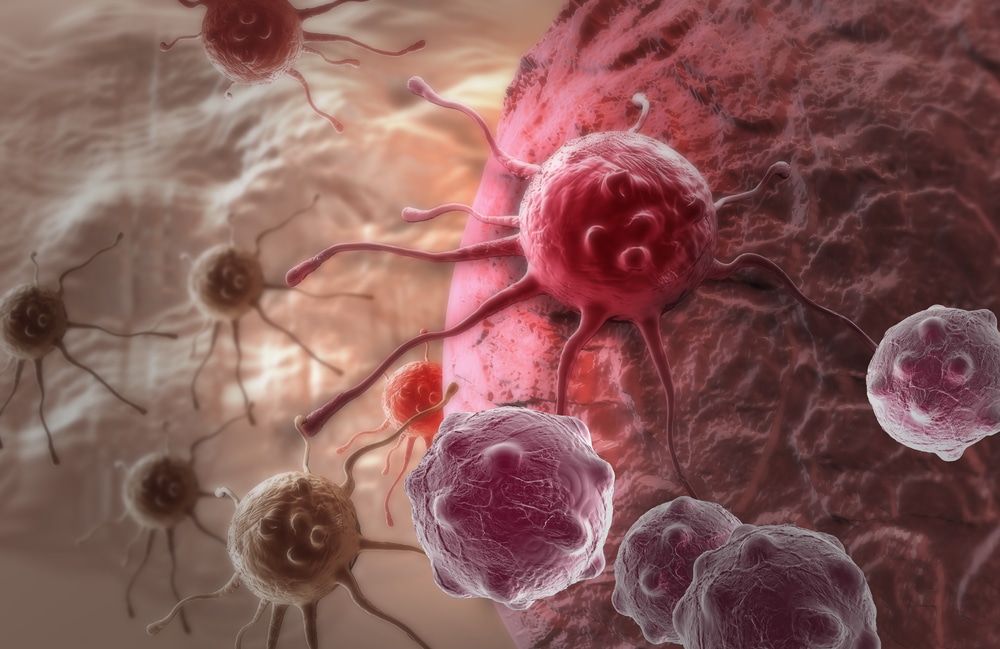
The unfortunate truth is this: The cause of prostate cancer is largely unknown, and, because we’re discussing cancer, there’s a lot of fear associated with the problem.
We are aware of a handful of risk factors, but we can draw few conclusions beyond them.
We know, for instance, that some inherited genes can increase your risk for prostate cancer.
We know that inflammation of the prostate is often associated with prostate cancer, but we don’t know if this is an actual cause.
Unfortunately, there just isn’t a lot of data out there that can point to a clear cause. All we can do is monitor for changes and react appropriately.
9.g.vi. TRT And BPH — Effects on Urinary Health
Since prostatic enlargement is affected by a metabolite of testosterone called DHT, it is common for prostate volume and PSA levels to increase when testosterone levels are normalized in hypogonadal men. More testosterone leads to more circulating DHT, higher DHT levels can increase the size of your prostate and your PSA.
For this reason, it is extremely important that your urinary habits, prostate health and PSA be closely monitored if you are on treatment for Low T.
Reported upon by Jody Charnow, a study by Dr. Kevin McVary, of Southern Illinois University School of Medicine showed no significant increase in lower urinary tract symptoms (LUTS) in patients being treated with testosterone when compared to those not on TRT.
Essentially, this means that the associated difficulty with urination that results from prostatic enlargement is no more likely to occur in men being treated with testosterone.
Talk to a TRT expert and get back to feeling the way you're supposed to.
Now serving patients in all Texas cities.
9.g.vii. TRT and Cancer — The Summary
There’s no cause-and-effect relationship between Testosterone Replacement Therapy and cancer.
Testosterone Replacement Therapy can possibly worsen existing prostate cancer, but it cannot cause new prostate cancer to grow.
Testosterone Replacement Therapy can be quite complex, and it therefore requires direct oversight by a trained medical care provider.
Anyone considering TRT should certainly have a conversation with their medical provider about testosterone’s role, or lack thereof, in cancer prior to determining if treatment is the right decision for them, but we believe there is no definitive evidence linking TRT and prostate cancer.
9.h. Testosterone, Cholesterol, and Effects on the Heart
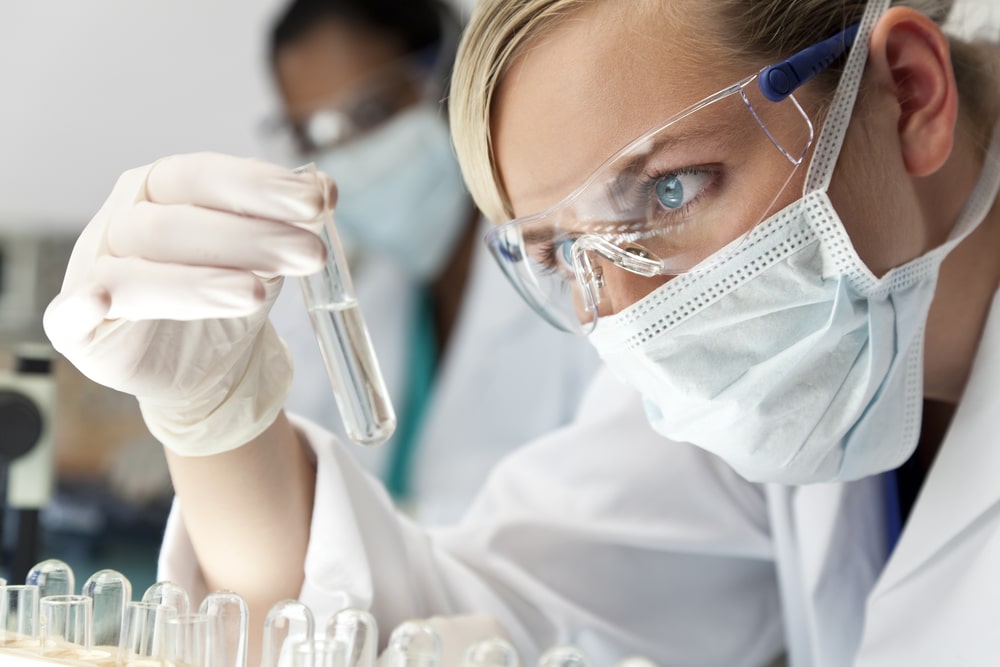
Very few studies (if any) have found that Testosterone Replacement Therapy for people with legitimately low testosterone is dangerous or harmful, either to the heart, to cholesterol levels, or to any other bodily function.
Consider this quote from a Harvard Health article on testosterone and cholesterol:
“Men who receive [testosterone]-deprivation therapy for prostate cancer drop their testosterone levels nearly to zero, and when that happens, their cholesterol levels rise. Even within the normal range, men with the lowest testosterone levels tend to have the highest cholesterol levels. And when doctors from the Mayo Clinic reviewed 30 trials of Testosterone Replacement Therapy, they did not find any overall effect of hormone treatment on cholesterol levels, for good or ill.”
You can read the full article here, but the point is this — Testosterone Replacement Therapy is unlikely to have much of an effect on your cholesterol, one way or the other.
In fact, it seems returning testosterone levels to normal may be good for your heart. Several studies seem to indicate that normal levels of testosterone may actually have a protective effect on the heart.
Talk to a TRT expert and get back to feeling the way you're supposed to.
Now serving patients in all Texas cities.
9.i. Increased Pain Tolerance
Opioids (drugs like Vicodin, Oxycontin, morphine, Dilaudid, and Lortab, sometimes referred to as narcotics) are prescribed for pain management.
It has long been documented that taking opioids can result in low testosterone levels.
Low testosterone can also reduce your pain tolerance, something to consider carefully if you are on pain medication chronically.
By restoring testosterone levels to normal through TRT, the need for pain management medications may decrease.
9.j. Testosterone Replacement Therapy and Fertility Risks

Let’s start off with a question that you and your spouse or partner should answer together before beginning TRT:
Is fertility important to you, and are you planning to have children in the near future?
The answer to those questions will be important in determining your course of treatment.
Our friends at Legacy have fertility solutions specially priced for TCT patients.
9.j.i. Introducing Testosterone into Your Body May Reduce Fertility, Sperm Count
In men, almost all testosterone is produced in the testes, which are the male sex glands, the same glands responsible for sperm production.
In the brain, your hypothalamus and pituitary gland control the amount of work your testes do.
Your hypothalamus produces gonadotropin-releasing hormone (GnRH) that signals the pituitary gland to generate two key fertility hormones, which are known as luteinizing hormone (LH) and follicular stimulating hormone (FSH).
FSH is responsible for initiating spermatization (the production of sperm), and LH plays a key role in testosterone production.
When exogenous testosterone is introduced into your system in order to bring levels up into the optimum range, your hypothalamus will determine that there is now enough testosterone present.
The hypothalamus doesn’t really concern itself with whether the testosterone in your system came from a TRT injection or was produced naturally. It delivers instructions to your pituitary gland to slow production based on the level of testosterone it detects.
The pituitary gland then produces less FSH and LH, which signals the testes to slow both testosterone and sperm production simultaneously.
Simply put, your brain senses sufficient levels of testosterone, so it slows down natural testosterone production.
Sperm production will decline at the same time, which means your sperm count will be reduced. A lower sperm count means that a man’s chance of impregnating his partner will be lower.
In other words, we interrupt the process of sperm production by introducing additional testosterone into the biochemical equation.
(It is important to note that TRT should never be mistaken for a form of birth control or contraception.)
Additionally, it is this same process that is responsible for the potential reduction in size and/or change in firmness of the testicles.
Talk to a TRT expert and get back to feeling the way you're supposed to.
Now serving patients in all Texas cities.
9.j.ii. Choosing Between TRT and Having Children Is a Difficult Decision
For men who want to father children, the decision over whether or not to have Testosterone Replacement Therapy is a difficult one.
On the one hand, TRT can bring massive improvements to a man’s quality of life by reducing fatigue, aiding concentration, reducing fat tissue production, building muscle, and restoring his sex drive to its usual level.
On the other hand, there is a risk that TRT will adversely affect fertility. Although TRT can normalize testosterone levels, it does not improve fertility because it suppresses the pathway for managing the levels of the other hormones involved in testicular stimulation.
If you and your partner are hoping to expand your family in the near future, it may be necessary to look at other possible avenues of Low T treatment that will maintain sperm production.
9.j.iii. TRT Options That Preserve Fertility

A short-term option for some men would be the use of hCG (human chorionic gonadotropin) for TRT. The hormone hCG mimics LH in the body without suppressing the levels of GnRH or FSH and therefore may actually have a positive effect on fertility.
hCG and other medications such as clomiphene can potentially be beneficial in this scenario as they do not result in lower sperm counts.
While this is not the best way to maintain normal testosterone levels, and these medications carry their own profile of potential side effects, they are options that we would be happy to discuss with you if maintaining fertility is a concern for you or your family.
The course of treatment will depend on your diagnosis as well as your goals and should be discussed in detail with your medical provider.
If having children remains a goal for your family yet you need relief from symptoms of low T, another option is sperm banking, which would allow you to undergo testosterone replacement while maintaining the option to attempt conception in the future.
Couples have successfully conceived children using sperm that has been frozen for up to 12 years.
Studies have shown that sperm count often returns to normal several months after stopping Testosterone Replacement Therapy. However, for men who do not want to risk not being able to father a child, banking sperm before starting TRT makes sense.
Learn More About hCG and Fertility
Talk to a TRT expert and get back to feeling the way you're supposed to.
Now serving patients in all Texas cities.
9.j.iv. Delaying TRT to Have Children
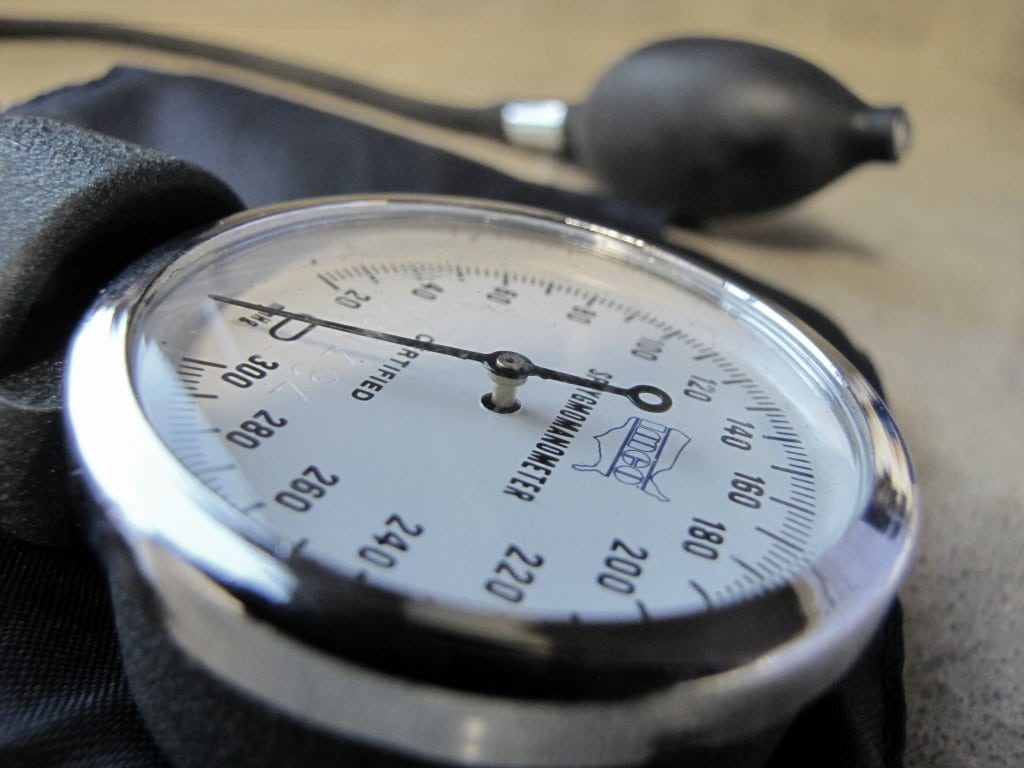
If having a family in the traditional manner is still a goal for you, holding off on treatment for a period of time is one option.
Obviously, there’s no way of predicting conception with any accuracy, so relief for the symptoms of low testosterone may have to be delayed for a significant amount of time, a difficult choice that may not be a practical option for those experiencing severe symptoms.
Making the right decision for you and your family is of utmost importance. There aren’t a lot of guarantees, but reasonable measures can be taken to lessen the negative impact that exogenous testosterone and TRT has on fertility.
9.k. Testosterone Replacement Therapy and Gynecomastia
Patients are sometimes concerned the potential correlation between TRT and gynecomastia.
Gynecomastia is enlargement of the male breast tissue, a condition that’s commonly referred to as “man boobs,” an undesirable physical side effect.
Let’s discuss the causes and, more importantly, prevention.
9.k.i. What Causes Gynecomastia?
The simple answer is, “Too much estrogen,” but it’s not just the simple amount of female hormones present in your system that leads to gynecomastia.
Research indicates that gynecomastia is usually caused by a hormone imbalance between male hormones (testosterone) and female hormones (estrogen or estradiol), with the ratio between the two as the determining factor.
This kind of imbalanced ratio is often caused by health factors that include the following:
- Adolescence
- Advanced age
- Anabolic steroids or androgens (especially illicit and unsupervised doses used to increase athletic performance)
- Liver and kidney disease
- Klinefelter’s Syndrome
- Thyroid disease
- Certain tumors
Hormones are your body’s communication network, and excess estrogen (in proportion to testosterone) signals the body to develop more female characteristics, which may include the development of breast tissue in men.
Talk to a TRT expert and get back to feeling the way you're supposed to.
Now serving patients in all Texas cities.
9.k.ii. How Are Supplemental Testosterone and Gynecomastia Connected?
Your body metabolizes testosterone into estradiol, a form of estrogen.
That means excess testosterone can become excess estrogen, which can cause or contribute to a hormonal imbalance, in turn leading to enlarged breast tissue.
That has lead to the term “testosterone-induced gynecomastia.”
Testosterone Replacement Therapy, coupled with the right dose of estrogen-blocking medication, can not only prevent the out-of-control rise of estrogen levels, but may also help to reverse weight gain and thereby stop the cycle of excess endogenous estrogen production.
In other words, if you’re under the care of a medical provider who specializes in hormone replacement therapy, you’re unlikely to experience gynecomastia (or any other side effect).
9.k.iii. Does Testosterone Cause Gynecomastia?
It could. Unsupervised (or poorly supervised) use of testosterone is certainly reckless and can result in gynecomastia.
If you performed a quick online search for “prevention of gynecomastia,” nearly all articles are concerned with PED (performance enhancing drugs) used for bodybuilding or enhancing sports performance. The locker room at the local gym is unlikely to be monitored by a qualified medical professional.
This is important. Once gynecomastia becomes established, simply cutting out the cause is not going to reverse the present condition.
Instead, surgical removal of the breast tissue may be necessary.
Quite simply, this is why you should always receive Testosterone Replacement Therapy (or any other hormone therapy) from expert medical providers specializing in hormone treatment.
Talk to a TRT expert and get back to feeling the way you're supposed to.
Now serving patients in all Texas cities.
9.k.iv. Testosterone and Gynecomastia — The Best Treatment is Prevention
There are preventative measures that can be taken to stop gynecomastia from occurring in the first place, including the following:
- Frequent and consistent testing of hormone levels to prevent a serious imbalance from occurring at all
- Issuance of a precise dose (based on the results of your blood work) of estrogen-blocking medication with each treatment to ensure that there’s no excess estrogen appearing in your system
These measures assure that you can achieve the testosterone level you need to feel your best without the danger of developing gynecomastia.
9.l. Side Effects of Testosterone Replacement Therapy (TRT) — Conclusions
Ultimately, it comes down to balance. Can we approach Low T treatment in such a way that allows for minimization of side effects while allowing for optimization of results?
Absolutely.
Testosterone Replacement Therapy is meant for men and women who have low testosterone.
It seems almost silly to have to say this, but unfortunately, many folks who don’t suffer from diagnosed low testosterone want to use it to boost their mood and gym results.
Testosterone should never be used this way.
A medical professional who is helping a patient with low testosterone is returning unnaturally low levels to normal, not artificially raising testosterone beyond what it should be (which is what people who take steroids to unnaturally gain muscle mass are doing).
When testosterone levels go far beyond what they should be, we start to see some negative results.
Through careful monitoring of your overall hormone balance and other relevant factors, such as hematocrit and PSA, we can use precise doses of supplementary testosterone and estrogen blockers to minimize or eliminate the possibilities of the common side effects associated with testosterone.
Talk to a TRT expert and get back to feeling the way you're supposed to.
Now serving patients in all Texas cities.
10. Testosterone Replacement Therapy and Erectile Dysfunction

Many men, from around age 35 to 65 or so, live with ED (erectile dysfunction) symptoms along with low libido, weight gain, difficulty building muscle, and increasing fatigue.
Could testosterone therapy help your ED?
Possibly.
Over the last few years, Low T has gotten tons of press attention, but with a negative agenda: getting clicks online and selling advertising space.
Quick fixes and simple solutions make great headlines and pull readers right in, especially when they offer so-called miracle solutions for a pervasive problem like ED.
Scientific research and medical experts agree: Testosterone Replacement Therapy alone does not “fix” erectile dysfunction.
Medical studies tell us that neither Low T or ED is a simple problem, and having one doesn’t necessarily mean it is linked to the other.
10.a. The Quick Fix Is a Big Risk
Every man is different, and the causes for ED vary.
You need to put in a little work to find the root cause and get the correct treatment for your specific needs.
Buying into the Low T myths, going for the bogus “quick fix” or one-size-fits-all solution means wasting time and money for no benefit.
Worst of all, you could be risking your health.
Remember quick fix = big risk.
Talk to a TRT expert and get back to feeling the way you're supposed to.
Now serving patients in all Texas cities.
10.b. Protect Your Health: Ending ED the Right Way
A personalized solution tailored to the needs of your body is the right way to address the problem of ED.
Testosterone Replacement Therapy (TRT) alone may not be the answer. Neither may Viagra or other drugs alone be sufficient.
The endocrine system is complex and requires individual treatment and adjustments over time to achieve/maintain the right hormonal balance
Get evaluated by an ED expert at a focused, experienced ED practice. Many men see improvement right away.
11. Testosterone Replacement Therapy: Before and After (A Patient’s Perspective)

Many people find that reading a personal account is helpful in making their decision regarding treatment for Low T.
One of our patients was kind enough to provide us with a testimonial regarding his experiences with TRT through Testosterone Centers of Texas:
Tom’s Story
Before I started treatment, I really didn’t know what to expect from Testosterone Replacement Therapy. I’ve been receiving testosterone therapy for about a year now, and I can say two things without a doubt: my everyday life has improved since starting, and … I wished I’d started sooner.
Don’t get me wrong, I actually started on the young side of the curve. I turn thirty-eight in a week, so I’m in the younger category of people receiving TRT (Testosterone Replacement Therapy), but even so, I probably could have started a few years sooner. The symptoms that led me to getting my levels checked were certainly there for a while before I went, and I can honestly and (very!) happily say that those symptoms have really gotten kicked to the curb since starting TRT.
One of the things that really kept me from moving forward was that I didn’t know what to expect from Testosterone Replacement Therapy — at all. So I’ll give this advice to anyone reading: if you’re even remotely wondering if you have low testosterone, you should go get checked. Don’t put it off.
Seriously, it’s an easy process that’s made easier still by pleasant professionals who know what they’re doing and will make sure you’re informed and comfortable. You don’t need to feel embarrassed, hesitant, or like you have something to hide.
Up to 40% of men over the age of 45 (and many younger – like me!) experience hypogonadism, or low testosterone. It’s a very treatable condition. What you’re doing is a proactive step toward maintaining your health and being the best you that you can be! Do it for you, do it for your wife, your kids, your job, whatever… but do it.
Talk to a TRT expert and get back to feeling the way you're supposed to.
Now serving patients in all Texas cities.
11.a. What to Expect From Testosterone Replacement Therapy after Submitting Your Information

First, you’ll get a phone call or email. A very nice person with great manners and a pleasant disposition will call you on the number you’ve given and schedule an appointment.
Next, you’ll go to your appointment. You’ll be welcomed by another nice person with great manners and a pleasant disposition as you walk in the door, and then you’ll be taken to meet with the medical provider. Yup, a real medical professional who is focused on exactly this subject.
The provider wants to hear what symptoms you’re experiencing and discuss exactly what to expect from Testosterone Replacement Therapy. For me, my biggest symptom was lethargy.
My life was great, but I didn’t quite feel like me anymore. I still worked out, but the results were lagging, and I just didn’t feel the same intensity I used to. I was tired, even when getting plenty of sleep. I was a little more grumpy at times than I wanted to be, and I just knew I wasn’t at my best. Something was missing.
Well, I learned that all of those feelings can be indicative of low testosterone. I was told what the treatment options would be if I had low testosterone and what to expect from Testosterone Replacement Therapy. It sounded great!
Because I scheduled my appointment before 10am, I had my levels checked. Look, I spent eight years in the Marines and have experienced some pretty horrific blood-draws by some pretty inexperienced hands — this was NOT one of those.
Having to deal with painful needles was definitely on my list of what to expect from Testosterone Replacement Therapy, but that didn’t end up being the case at all. In the same comfortable room I’d already been in, a very competent professional made it quick and painless.
These people are good at what they do.
I learned later that I could have scheduled my lab appointment for another day and just gone in to my first appointment to gather information, but I was really ready to get this problem figured out.
After they drew my blood, they sent it off to an offsite lab to get it tested. I really appreciated this part of the process because I knew they weren’t trying to trick me with some phony results — these guys are professionals, and they wanted to give me a legitimate diagnosis, not fill their pockets at my expense.
I got a phone call within a few days, and as it turned out, I was below the normal range.
I set up my second blood test there so they could test the rest of my testosterone levels. After my second lab test, I got the second phone call and learned that all of my levels were below a normal range and that I was a candidate for TRT.
We talked about treatment options, and about a week after I first filled out a form online I was getting treatment for my Low T. I swear I’ve waited twice that long just to get to the first appointment with a doctor! That first treatment was fast, but more importantly:
It worked.
That’s the most surprising part about TRT for me. When I was trying to figure out what to expect from Testosterone Replacement Therapy, having it work right away was NOT on the list! And it’s been working ever since. My feeling of overall physical “meh” has been replaced by “yup!” I feel like me again, the me that I like being.
I’m not Superman (unless you ask my daughter), but I feel like every workout is a good workout, rather than drudgery. I’m back to being the cheerful and confident guy I feel like I should be. I feel up, when before TRT I might have felt flat. It’s great.
I go once a week to discuss how things are going and to receive my injection. I get a text message the day before each visit so I won’t forget, and rescheduling is a breeze and without any cost.
Not kidding, it’s a life-changer you shouldn’t miss (if it’s right for you and a medical professional agrees), and it’s easy.
If you know something’s wrong and still haven’t taken action yet, do it.
Speaking from experience?
You won’t regret it.
Talk to a TRT expert and get back to feeling the way you're supposed to.
Now serving patients in all Texas cities.
12. Testosterone Replacement Therapy — What to Do Next

The symptoms of low testosterone can damage your health and wellbeing in many different ways.
If you suffer from low testosterone, you can feel better.
That’s why Testosterone Replacement Therapy (TRT) might be right for you. Men and women all over the world, including you, can benefit from a healthier hormone balance and an improved quality of life if your hormone levels are out of alignment and a medical professional agrees.
Although many patients come to us for help resolving particularly troublesome symptoms, they are often surprised at the many unexpected benefits of Testosterone Replacement Therapy.
Remember, TRT is only effective for patients actually suffering from Low T, and it can be dangerous for people with normal testosterone levels.
Virtually every medical treatment can cause adverse reactions. All things considered, those side effects associated with Testosterone Replacement Therapy are quite manageable.
We know what to look for and how to intervene.
We have formed our protocols based on the principles of evidence-based medicine. That means that we study our craft critically and thoroughly. We continually seek to deepen our knowledge base in order to provide the most comprehensive level of care.
The most important factors in whether you achieve maximal response are your consistency with treatment and how well your care is managed.
The fact of the matter is that therapy, when done right, requires the diligent tenacity one would put toward any other serious medical issue.
From the time of your diagnosis onward, your symptoms and our dedication to your safety guide our treatment plan. We put your safety above everything, beginning with the initiation of treatment and continuing as long as necessary.
The basis of our regimen is structured on recommendations from the Endocrine Society.
By assimilating information that has been proven in the academic and clinical fields, we are able to tailor plans that meet the unique demands of each of our patients.
Throughout all of this, we remain committed to the practice of good medicine and precise Low T treatment.
Talk to a TRT expert and get back to feeling the way you're supposed to.
Now serving patients in all Texas cities.
13. Why Testosterone Replacement Therapy?
The simple answer to the question of “Why TRT?” is this: It’s time to get your life back.
When I say that TRT, or Low T treatment, is more complex than it may seem, understand that we have done our homework.
We would be happy to sit down with you and discuss the any questions you may have about therapy. Don’t trust these delicate matters to just anyone.
Put your trust in reliable medical professionals. One of our providers can answer any questions you may have about low testosterone. Walk-ins are welcome, and consultations are free.
TRT is a safe and effective treatment that could relieve the symptoms that are damaging your quality of life.
